"Russian Сulture in Buryatia before the reign of Peter the Great"
The history of the Old Believers in Zabaikalye
"Russian Сulture in Buryatia before the reign of Peter the Great"
The history of the Old Believers in Zabaikalye
The culture of the peoples of the Republic of Buryatia has been profoundly influenced by the cultures of Asia and Europe. The Republic of Buryatia, located on the shores of Lake Baikal, has a rich cultural and historical heritage embodied in unique sites of art, history and architecture, rich museum collections, folklore and lifestyle of the local population.
The culture of the most distinctive ethnic group of the Russian population, who became known as the Old Believers, is one of the brightest parts of the rich culture of Buryatia. Due to this, people, traditions, customs and mode of life, existed in the Russian Empire before the reign of Peter the Great, have been preserved here, in Buryatia. In 2001 UNESCO put the culture of the Old Believers of Zabaikalye on the list of the Intangible Cultural Heritage of Humanity.
The culture of the most distinctive ethnic group of the Russian population, who became known as the Old Believers, is one of the brightest parts of the rich culture of Buryatia. Due to this, people, traditions, customs and mode of life, existed in the Russian Empire before the reign of Peter the Great, have been preserved here, in Buryatia. In 2001 UNESCO put the culture of the Old Believers of Zabaikalye on the list of the Intangible Cultural Heritage of Humanity.




How did it all begin?
How did it all begin?
The Old Believers, also called as "Old Ritualists" or "Starovery" – [old faith], originated as a group of religious dissenters opposed to Patriarch Nikon's Nikon's religious reforms introduced in 1653-1660 during the reign of the Tsar Alexei Michailovich. The dispute over the revision of the service books, which initially had a religious and cultural character, soon escalated and resulted in the schism of the Russian Orthodox Church. Persecuted by the authorities for adhering to the old rituals and service books, the Old Believers settled in remote areas of Russia and abroad: in Romania, Turkey and on territories of modern Poland.
Many of their communities lived in almost complete isolation, thus preserving the old liturgical practices that were crucial to their religious and cultural identity. They preserved Old Slavic language and strictly followed their ancestors' traditions and customs. In 1762 the Empress Catherine the Great issued the manifesto calling on the Old Believers to return to Russia, to Siberia, on preferential terms. The Starovery of twenty thousand people were relocated in Zabaikalye from Poland by separate groups in the second half of the 18th century.
Many of their communities lived in almost complete isolation, thus preserving the old liturgical practices that were crucial to their religious and cultural identity. They preserved Old Slavic language and strictly followed their ancestors' traditions and customs. In 1762 the Empress Catherine the Great issued the manifesto calling on the Old Believers to return to Russia, to Siberia, on preferential terms. The Starovery of twenty thousand people were relocated in Zabaikalye from Poland by separate groups in the second half of the 18th century.
Local population called them [Semeiskie] because unlike other exiled groups of people, they arrived to Eastern Siberia with large families. This term was derived from the word [Sem'ya] - [family]. In a new land they founded villages, including Tarbagatay, Kuitun, Kunaley, later Novaya (New) Bryan and others. By the late 18th century, there were thirty villages in Buryatia.
Many travelers and high ranking officials, Mikhail Korsakov (1826-1871), the Governor – General of Eastern Siberia, mentioned their industry and diligence in exploring new territories.
The Decembrist Andrey Rosen, who visited the Old Believers' village in 1830, wrote: "Their houses are big and beautiful. The people are so hospitable and very beautiful. Women are tall, white-skinned and red- cheeked. Their household demonstrates order, fullness and industry".
Houses of the Old Believer's differed from dwellings of other Siberian peoples by their big sizes, cleanness and well organized housekeeping. Despite the fact that they did not recognize the conventional medicine, population growth rate was higher than that of other ethnic groups. The Old Believers led a healthy life: they worked regularly outside, ate healthy food and no bad habits. The Old Believers were strong in their spirit, hardworking and faithful to their ancestors' lifestyle, customs and traditions.They became natives in Siberia.
The formation of their culture has taken a long time. Originating in the Middle Ages in Central, Southern and Western parts of Russia, it was enlarged with the elements of the Polish culture. Some peculiarities of their life sustaining activity like animal breeding they adopted from the Buryat people. The combination of the Southern cultural elements in terms of their dialect, and the Central Russian elements in terms of their national outfit and dwelling, makes this culture unique and picturesque.
Many travelers and high ranking officials, Mikhail Korsakov (1826-1871), the Governor – General of Eastern Siberia, mentioned their industry and diligence in exploring new territories.
The Decembrist Andrey Rosen, who visited the Old Believers' village in 1830, wrote: "Their houses are big and beautiful. The people are so hospitable and very beautiful. Women are tall, white-skinned and red- cheeked. Their household demonstrates order, fullness and industry".
Houses of the Old Believer's differed from dwellings of other Siberian peoples by their big sizes, cleanness and well organized housekeeping. Despite the fact that they did not recognize the conventional medicine, population growth rate was higher than that of other ethnic groups. The Old Believers led a healthy life: they worked regularly outside, ate healthy food and no bad habits. The Old Believers were strong in their spirit, hardworking and faithful to their ancestors' lifestyle, customs and traditions.They became natives in Siberia.
The formation of their culture has taken a long time. Originating in the Middle Ages in Central, Southern and Western parts of Russia, it was enlarged with the elements of the Polish culture. Some peculiarities of their life sustaining activity like animal breeding they adopted from the Buryat people. The combination of the Southern cultural elements in terms of their dialect, and the Central Russian elements in terms of their national outfit and dwelling, makes this culture unique and picturesque.


Order of the Selenginsk Chancellery to the Udinsk Chancellery concerning the issue of farming and haying tools to the future settlers. March 13, 1766. The State archive of the Republic of Buryatia


Name lists of the Tarbagatay parish's Old Believers in 1820. The State archive of the Republic of Buryatia.














Currently, the Republic of Buryatia is one of the centers of the Old Believers' culture in the Russian Federation. Oral intangible and material heritage of this ethnic group is presented in all territories of their residence in Buryatia and in the rich museum collections. Visiting a semeisky village is something worth seeing. It is like to make a wonderful trip to the past where people still wear their traditional national outfits, live in picturesque ancient houses and use authentic tools and utensils in their daily life. Listening to the part songs, sung by the Old Believers in chorus, merges one in an amazing atmosphere of their world.



The National museum of the Republic of Buryatia houses a rich collection of the Old Believers' culture numbering more than three hundred items, including national garments and outfits, utensils, tools, interior objects, cult items, documents, books, manuscripts and photographs.
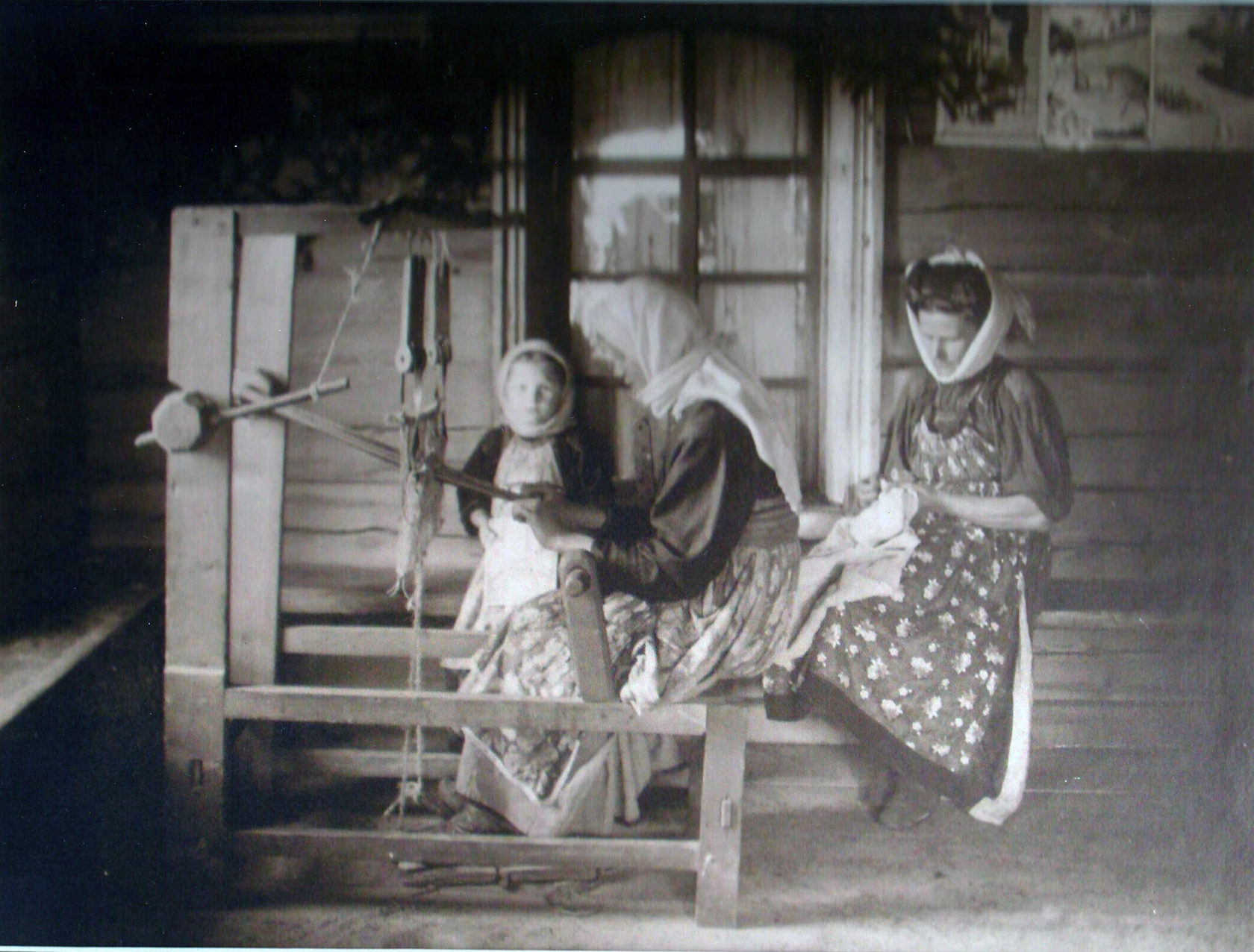
The collection was formed during the antireligious campaign launched in the USSR in the 1930-s, and lasted till the 1940-s. The collection was enriched with new museum items in the 1970-s. In 2015 museum curators conducted a scientific expedition to the Old Believers' settlements to gather more items for the collection.
The museum items present the Old Believers' lifestyle in Zabaikalye.
The museum items present the Old Believers' lifestyle in Zabaikalye.




Faith
Faith
The story about the destinies of the Old Believers is one of the most tragic pages in the history of the Russian Orthodox Church and the Russian people. The reform of the Russian Orthodox Church introduced by Nikon, the Patriarch of Moscow, in the 17th century split the Russian people into two opposing forces and led to the denial of millions of Christians of the Russian Orthodox Church.
The main idea of the reform was to make unification between the Russian and Greek rites. The Patriarch Nikon started with editing Holy Scriptures and liturgical books to align with the Greek ones. The main alterations offered by Nikon were: making the sign of the cross with two fingers, index and middle, joined with thumb at a point instead of the old practice with two fingers: index finger straight and middle slightly bent; bowing from the waist instead of bowing down to the ground; counterclockwise direction of procession; five Prosphora in the Liturgy instead of 7 and the changing of the shape of the Holy Cross and others.
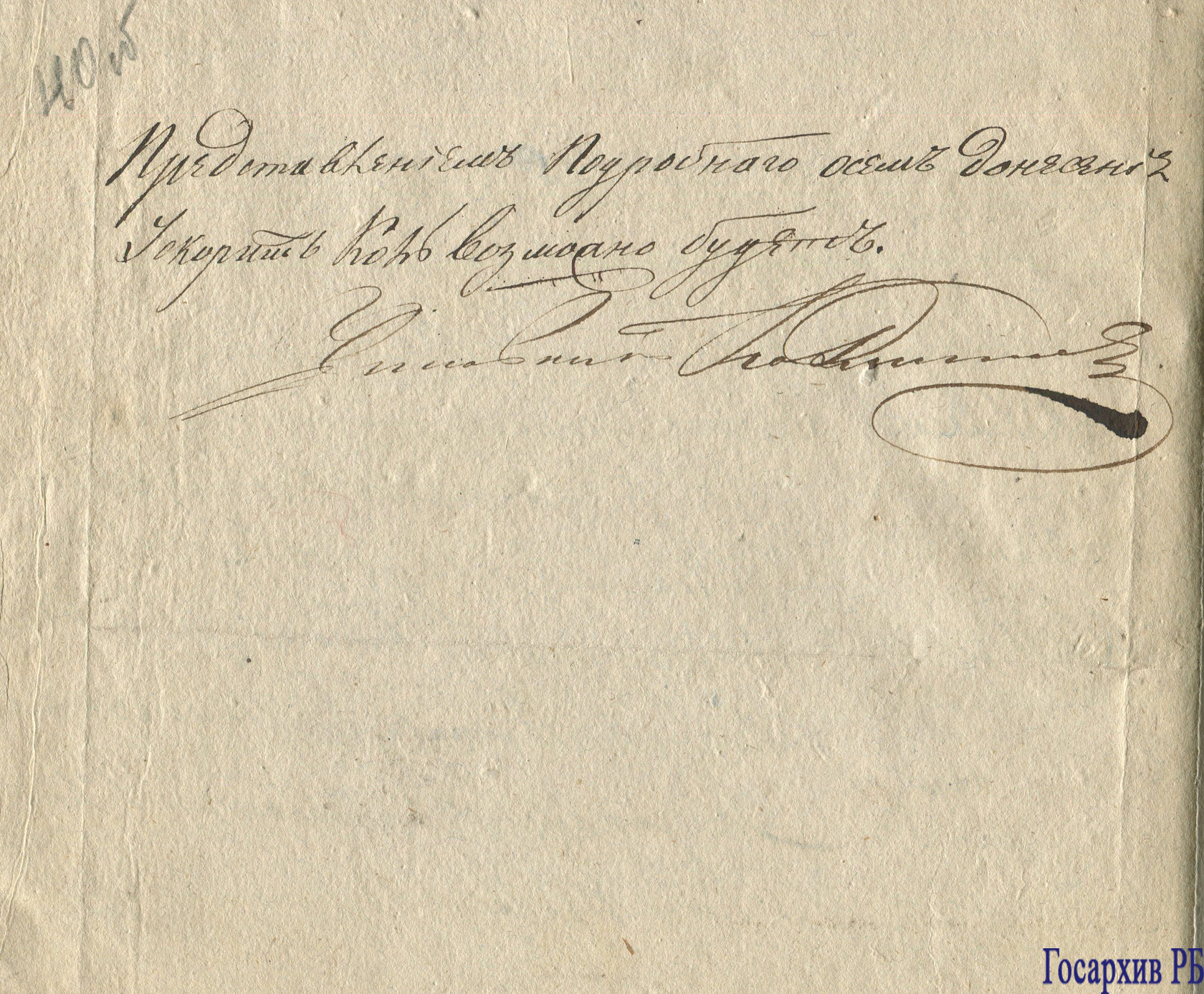
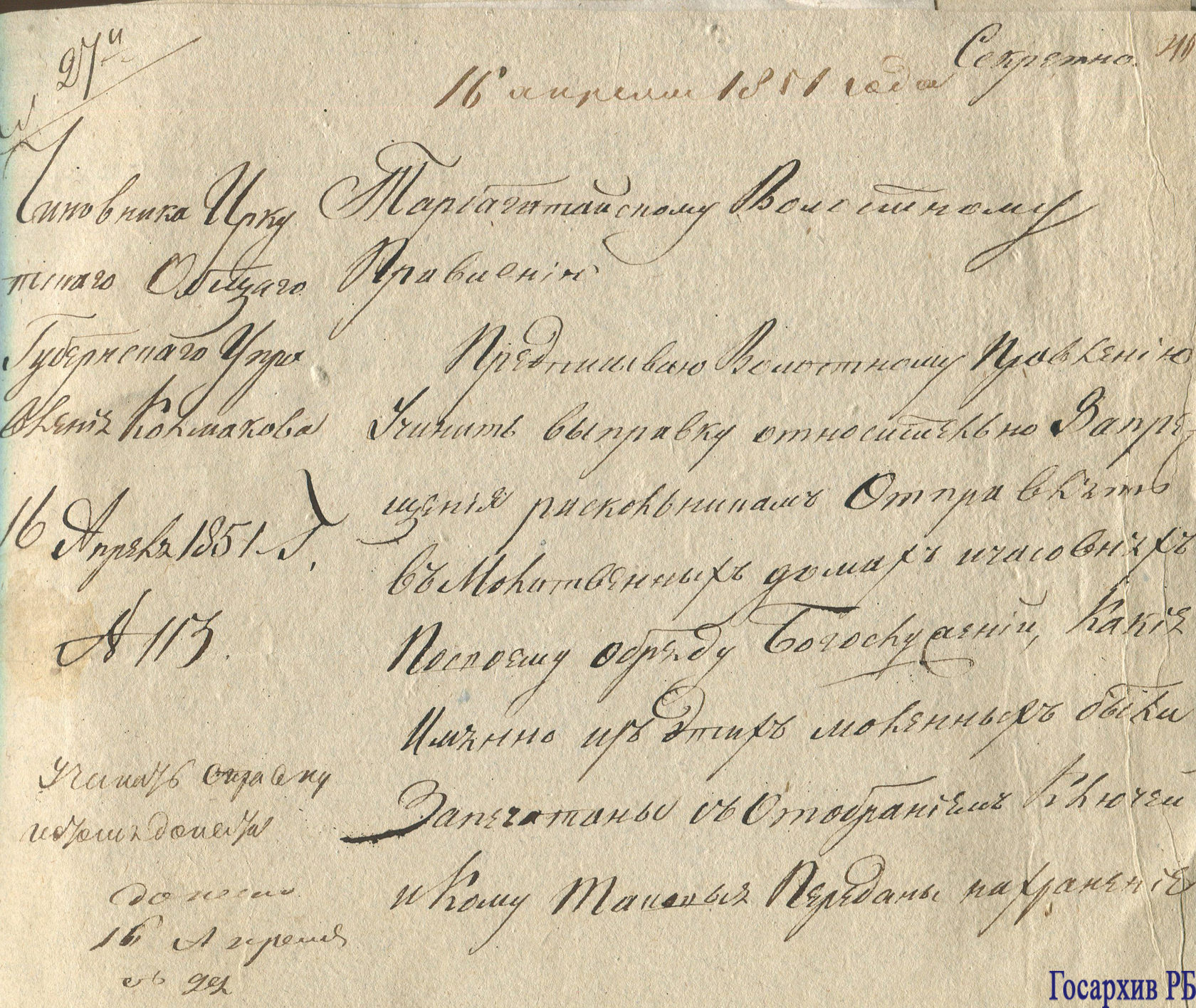
Secret instruction of the Irkutsk General Provincial Administration to the Tarbagatay parish government on the prohibition for the schismatics to hold worships at prayer houses and chapels. April 16, 1851. The State archive of the Republic of Buryatia
One of the main opponents of the reforms and the leader of the religious oppositional movement was Archpriest Avvakum (1620-1682). Due to his faith and denial of the reforms he was one of the first to be sent into exile to Siberia. After his exile, many people who were adherents of the old rites were also undergone repressions.

Document of the Tarbagatay Zosimo-Savvatiev church's priest to the Tarbagatay parish government concerning the permission to perform the marriage ceremony of the schismatics and the Orthodox. August 31, 1851. The State archive of the Republic of Buryatia
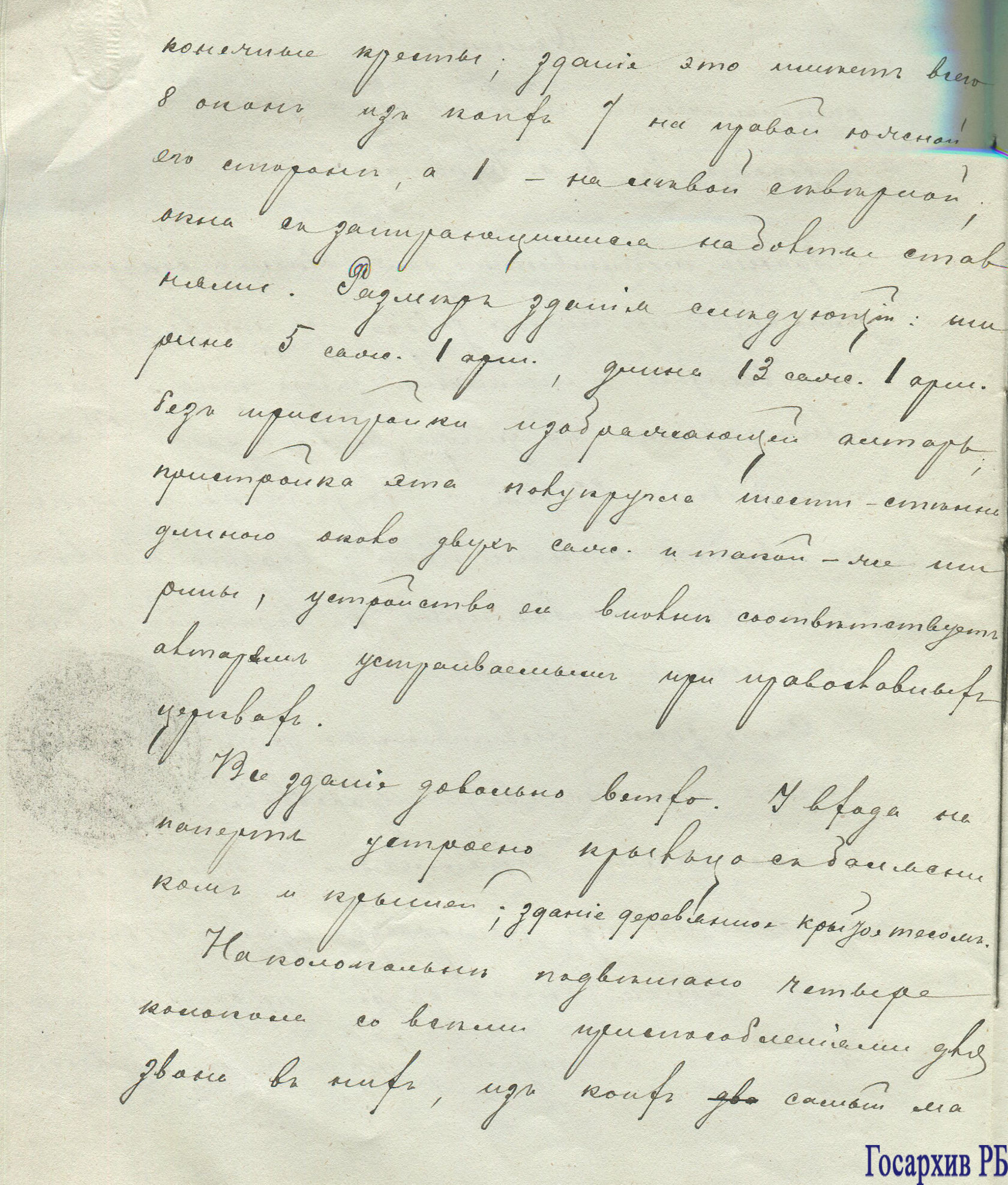


Description of the Old Believer prayer house in Kunaley village. April 29, 1891. The State archive of the Republic of Buryatia





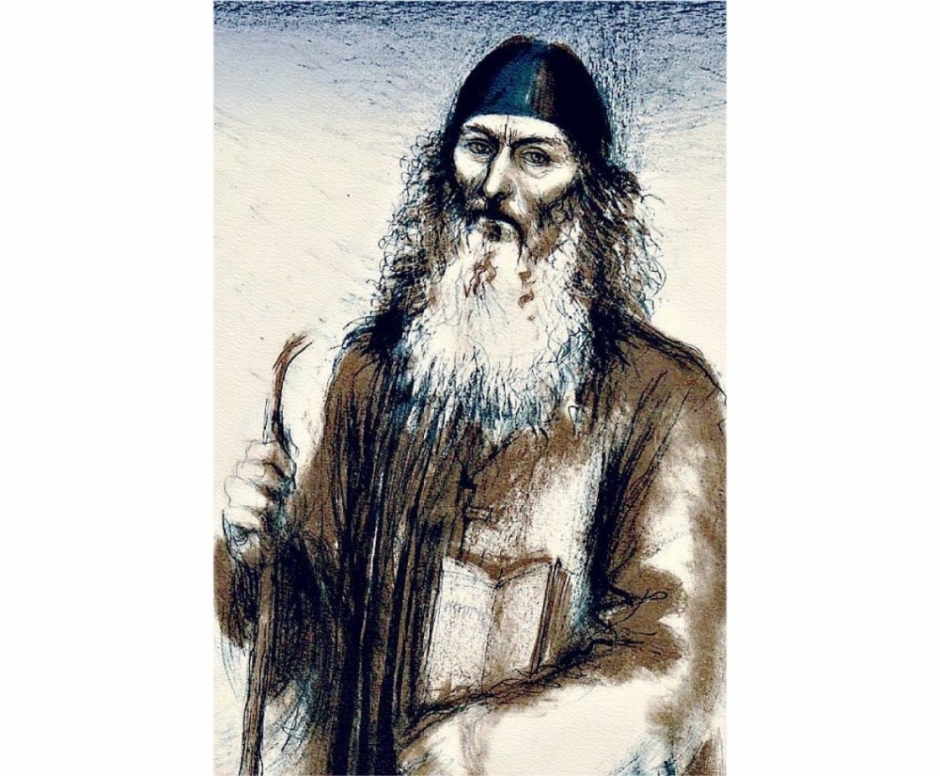
During his exile, he and his family traveled from the Urals to the steppes of Zabaikalye, clearing the way for the Old Believers who arrived a hundred years after him. In 1657 Avvakum descended the Angara river, circled the southern part of Baikal, sailed across the Selenga river, and reached Posolsk (Ust-Prorva) village in the Kabansky district. There is a memorial cross installed there in memory of the path made by the archpriest. An intending cross to Archpriest Avvakum was installed in one of the largest centers of the Semeiskie's residence, on a hill opposite Mount Omulevka in the Tarbagataysky district. The Old Believers acknowledge Archpriest Avvakum as a martyr.






The story about the destinies of the Old Believers is one of the most tragic pages in the history of the Russian Orthodox Church and the Russian people. The reform of the Russian Orthodox Church introduced by Nikon, the Patriarch of Moscow, in the 17th century split the Russian people into two opposing forces and led to the denial of millions of Christians of the Russian Orthodox Church.
The main idea of the reform was to make unification between the Russian and Greek rites. The Patriarch Nikon started with editing Holy Scriptures and liturgical books to align with the Greek ones. The main alterations offered by Nikon were: making the sign of the cross with two fingers, index and middle, joined with thumb at a point instead of the old practice with two fingers: index finger straight and middle slightly bent; bowing from the waist instead of bowing down to the ground; counterclockwise direction of procession; five Prosphora in the Liturgy instead of 7 and the changing of the shape of the Holy Cross and others.
The main idea of the reform was to make unification between the Russian and Greek rites. The Patriarch Nikon started with editing Holy Scriptures and liturgical books to align with the Greek ones. The main alterations offered by Nikon were: making the sign of the cross with two fingers, index and middle, joined with thumb at a point instead of the old practice with two fingers: index finger straight and middle slightly bent; bowing from the waist instead of bowing down to the ground; counterclockwise direction of procession; five Prosphora in the Liturgy instead of 7 and the changing of the shape of the Holy Cross and others.
During his exile, he and his family traveled from the Urals to the steppes of Zabaikalye, clearing the way for the Old Believers who arrived a hundred years after him. In 1657 Avvakum descended the Angara river, circled the southern part of Baikal, sailed across the Selenga river, and reached Posolsk (Ust-Prorva) village in the Kabansky district. There is a memorial cross installed there in memory of the path made by the archpriest. An intending cross to Archpriest Avvakum was installed in one of the largest centers of the Semeiskie's residence, on a hill opposite Mount Omulevka in the Tarbagataysky district. The Old Believers acknowledge Archpriest Avvakum as a martyr.


Books
Books
Books have played a significant role in the spiritual education of people in Russia, and, thus, in the spiritual life of the Old Believers, since the Middles Ages. Holy Scriptures were considered as one of the main shrines for them.
The state monopoly did not allow the Old Believers to release literature responding their religious demands. That is why they carried ancient religious texts and manuscripts with them to Zabaikalye. By time they purchased necessary literature from diasporas of Old Believers who settled in other provinces of the Russian Empire, primarily, on the territories of the Ural mountain. The Old Believers estimated books as the only value. With a great care, books were transmitted from one generation to another. Elderly people gifted books to younger relatives and donated them to monasteries. Rare stamps of holy texts, released by the Moscow Printing house before the Nikon's reforms, and books, released by legal and semi-legal typographies in the late 18th - 20th centuries, including service books, didactical and polemical literature and books for elementary education, appeared in Buryatia together with the Old Believers.
The Ostrog Bible is first complete printed edition of the Bible in Church Slavonic language. It was published by the first Russian printer deacon Ivan Fyodorov in the town of Ostrog in 1581. The prince Konstantin Ostrozhsky and the group of scholars gathered around the Ostrog academy in 1580-158, assisted him. The importance of the first Cyrillic Bible can hardly be overestimated. The Ostrog Bible played a tremendous role in religious education of people in Russia and in Eastern Europe. For Old Believers the Bible was of a special significance because it was created before the Nikon reforms.
The state monopoly did not allow the Old Believers to release literature responding their religious demands. That is why they carried ancient religious texts and manuscripts with them to Zabaikalye. By time they purchased necessary literature from diasporas of Old Believers who settled in other provinces of the Russian Empire, primarily, on the territories of the Ural mountain. The Old Believers estimated books as the only value. With a great care, books were transmitted from one generation to another. Elderly people gifted books to younger relatives and donated them to monasteries. Rare stamps of holy texts, released by the Moscow Printing house before the Nikon's reforms, and books, released by legal and semi-legal typographies in the late 18th - 20th centuries, including service books, didactical and polemical literature and books for elementary education, appeared in Buryatia together with the Old Believers.
The Ostrog Bible is first complete printed edition of the Bible in Church Slavonic language. It was published by the first Russian printer deacon Ivan Fyodorov in the town of Ostrog in 1581. The prince Konstantin Ostrozhsky and the group of scholars gathered around the Ostrog academy in 1580-158, assisted him. The importance of the first Cyrillic Bible can hardly be overestimated. The Ostrog Bible played a tremendous role in religious education of people in Russia and in Eastern Europe. For Old Believers the Bible was of a special significance because it was created before the Nikon reforms.




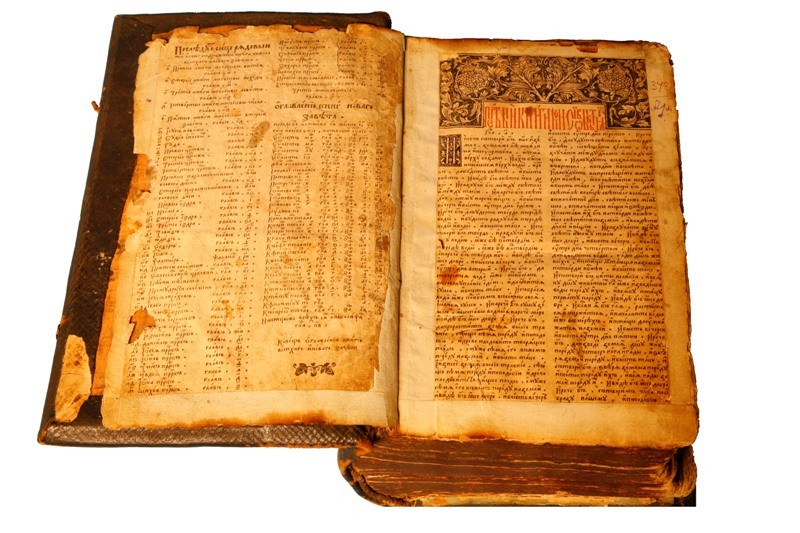

Lestovka, Old Believer Orthodox rosary. Early 20th century
Bible
The Ostrog Bible is the first printed edition of the Bible in Church Slavonic language. It was published by the first Russian printer deacon Ivan Phyodorov in the town of Ostrog in 1581.
The Ostrog Bible is the first printed edition of the Bible in Church Slavonic language. It was published by the first Russian printer deacon Ivan Phyodorov in the town of Ostrog in 1581.




The National Library of the Republic of Buryatia retains the collection of the works of the Saint John Chrysostom's words – the Margaret. This edition takes us to the origins of book printing in Moscow and it was esteemed and extended in Russia. Margarite in Greek means "pearl". The book was released by the Moscow Print Yard in 1641.


Margarite, compilation of the Saint John Chrysostom's words
Margarite in Greek means "pearl". The book was released by the Moscow Print Yard in 1641
Margarite in Greek means "pearl". The book was released by the Moscow Print Yard in 1641

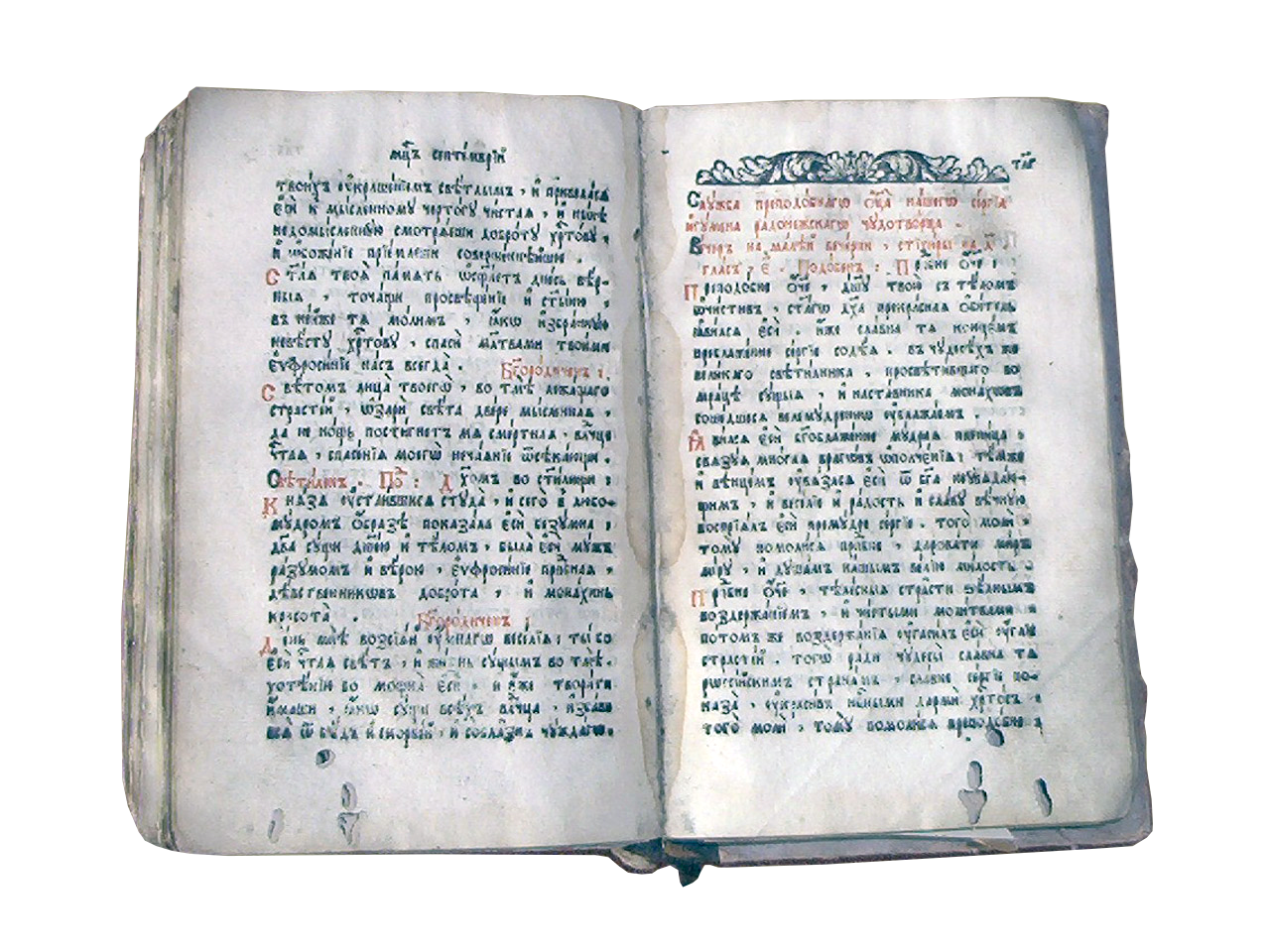
One of the interesting specimens of the National Library of the Republic of Buryatia's collection – the Hexaemeron, theological treatise, dating from 1802. According to the output data at the end of the book it's published in Vilno.
Hexaemeron, theological treatise 1802



Large range of hand written books widely spread among Old Believers including hand written copies of service books, books of sermons, commentaries, chronicles, lectionaries were created according to a strict decorative manner. Authors implemented various patterns and ornaments of the Medieval Russian Art. By time, a special [Gusly] style was formed in arranging a page. The first line of the text was written in larger red letters and the header, title, initials were also arranged in a special order.
This style was also used in compiling musical hand written books called [Kryuki] - [hooks] or [Znamena]", including "Oktai", "Irmoloi", "Obikhod". These books are considered as the only surviving sources and crucial documents of the ancient tradition of the Old Believers called the Znamenny chant. It is a singing tradition, which is unison liturgical singing with its own specific natation called "Kryuki". After the Nikon's reforms liturgical singing became "five-line singing". The Old Believers preserved indigenous polyphonic repertoire known as "three - line singing".
This style was also used in compiling musical hand written books called [Kryuki] - [hooks] or [Znamena]", including "Oktai", "Irmoloi", "Obikhod". These books are considered as the only surviving sources and crucial documents of the ancient tradition of the Old Believers called the Znamenny chant. It is a singing tradition, which is unison liturgical singing with its own specific natation called "Kryuki". After the Nikon's reforms liturgical singing became "five-line singing". The Old Believers preserved indigenous polyphonic repertoire known as "three - line singing".

"Irmoloi", pre-Nikonian neumatic liturgical chant book. Early 20th century



Demestvennik, notation guide for a chanter in a pre-Nikonian liturgical chant. Kryuki hand written book, the 1830-s.


Icons
Icons
The Russian iconography suffered some change tendencies, caused by the strong influence of the Western art, that occurred much prior to the religious schism. The Old Believers were actively against innovations trying to preserve Ancient Russian and Byzantium canons.
First of all, the iconography was featured by the depiction of making cross with two fingers. They did not recognize the letters "IС.ХС" depicted on icons. The considered the letters "IC.X.C" as the only correct letters. The Old Believers also continued to depict the evangelists in the images of animals, which was strictly forbidden by the Russian Orthodox Church. One of the main symbols - the eight-pointed cross, or Crucifix, was depicted on icons in the hands of the Saints or attached to the church's domes. The icons also portrayed new images of the Virgin Mary and Saints canonized by the Old Believers after the Schism.
First of all, the iconography was featured by the depiction of making cross with two fingers. They did not recognize the letters "IС.ХС" depicted on icons. The considered the letters "IC.X.C" as the only correct letters. The Old Believers also continued to depict the evangelists in the images of animals, which was strictly forbidden by the Russian Orthodox Church. One of the main symbols - the eight-pointed cross, or Crucifix, was depicted on icons in the hands of the Saints or attached to the church's domes. The icons also portrayed new images of the Virgin Mary and Saints canonized by the Old Believers after the Schism.
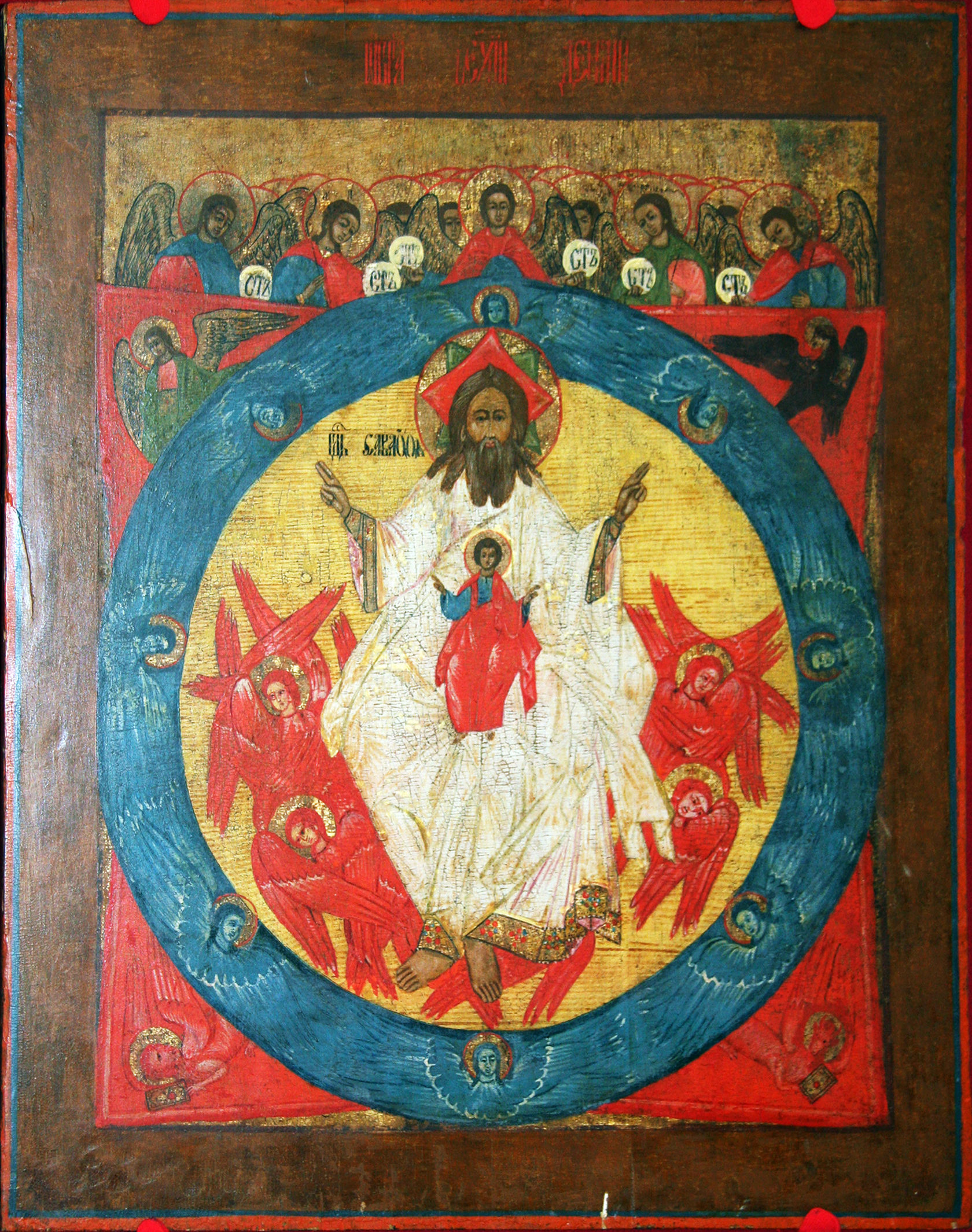

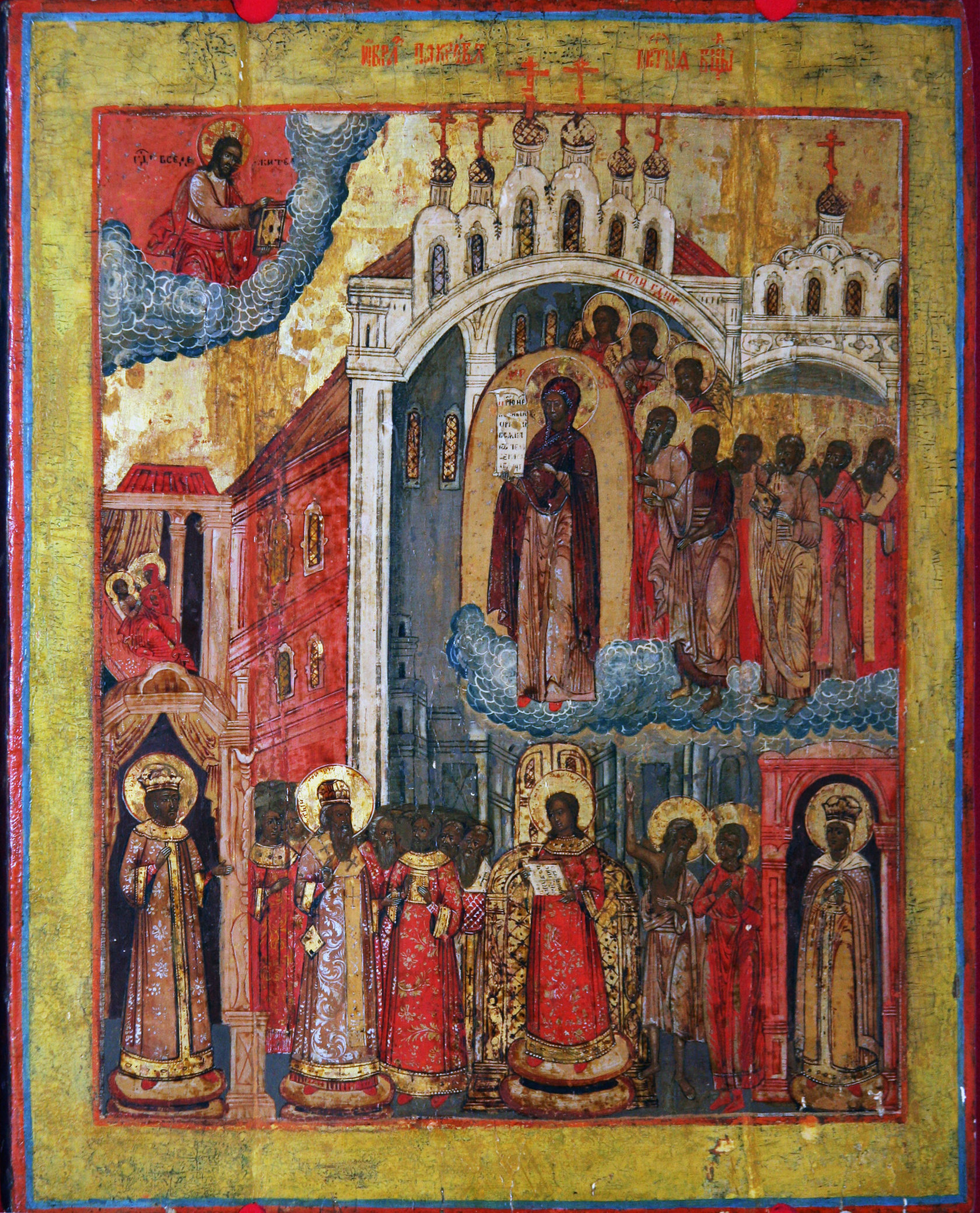

Among the cult objects strongly revered by the Old Believers, in addition to Crucifixes, were cast copper icons and [skladens] that are the icons with foldable side flaps: diptych and polyptych. Old Believers used to move from one place to another that is why with cast copper icons it was much easier to travel. Later, according to a new law, the usage of non-ferrous metals was forbidden in the Russian Empire and, thus, manufacture, sale and distribution of copper icons was under the restriction. But the Old Believers' masters continued their manufacture and reached a high level in it.



Cast copper icons and Crucifixes were approximately from 4 to 30 cm in length and were made of bright –yellow copper, often decorated inside with blue, yellow, white and green enamel. The icons often contained quotations on the backside and were decorated with floral and geometric patterns.
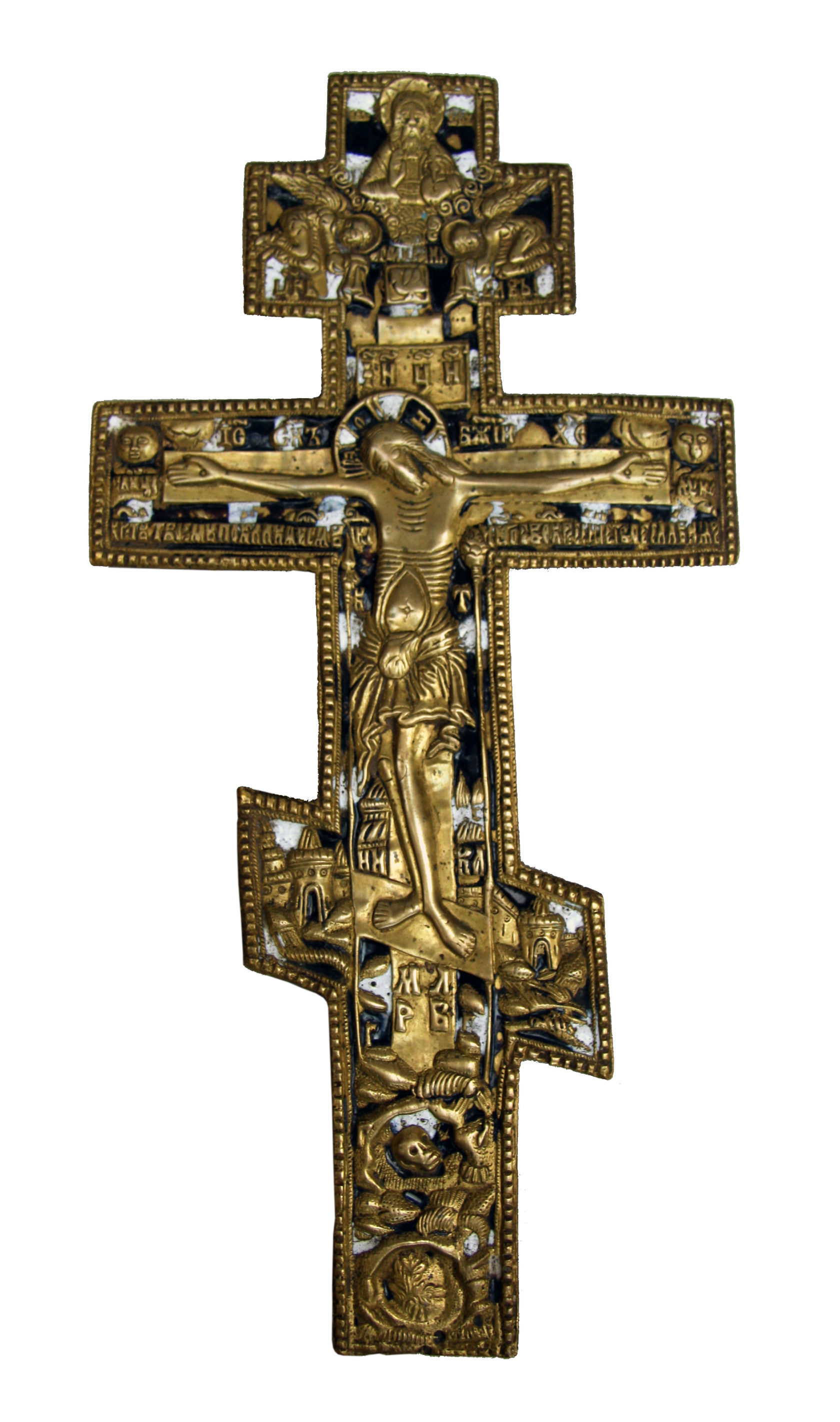
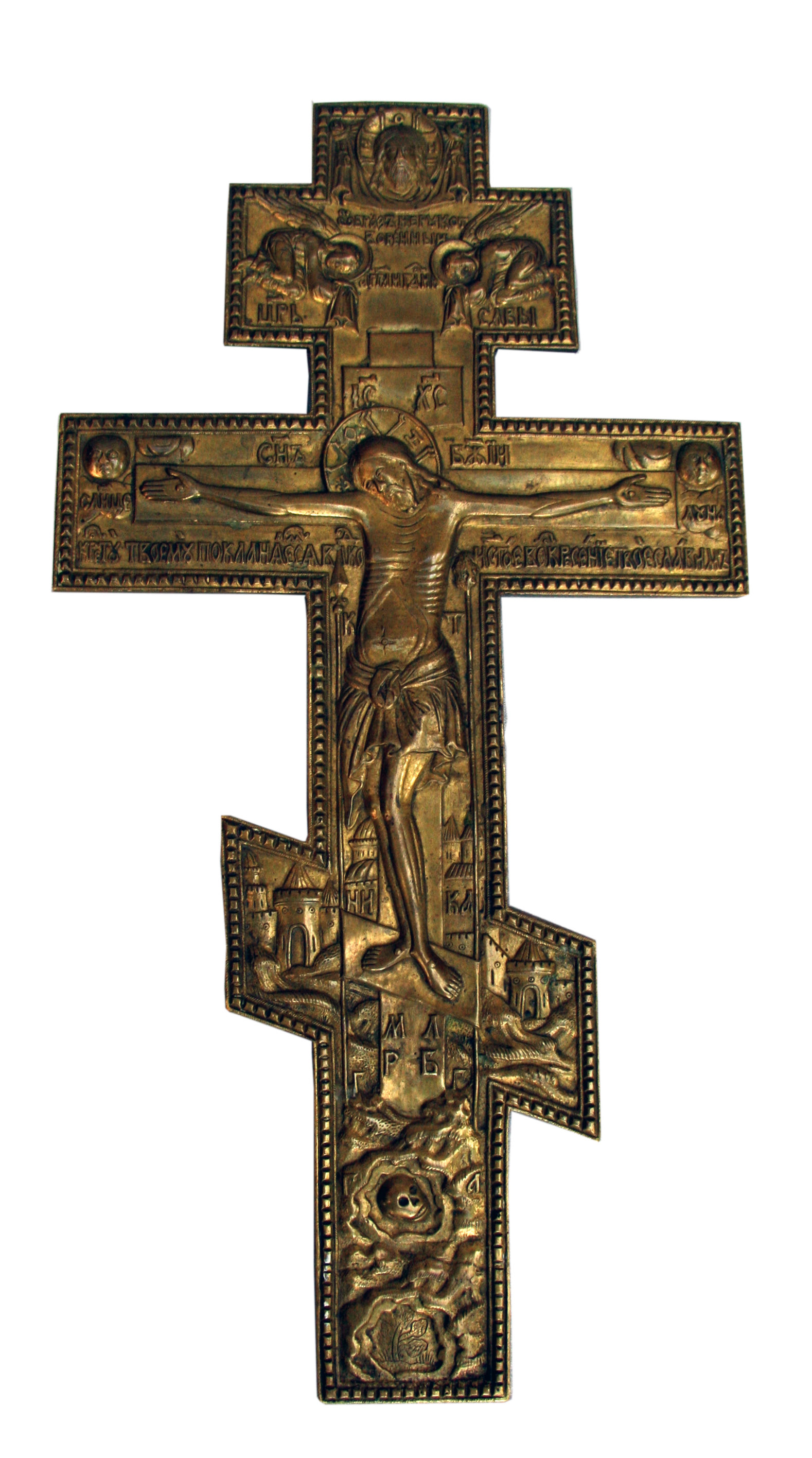

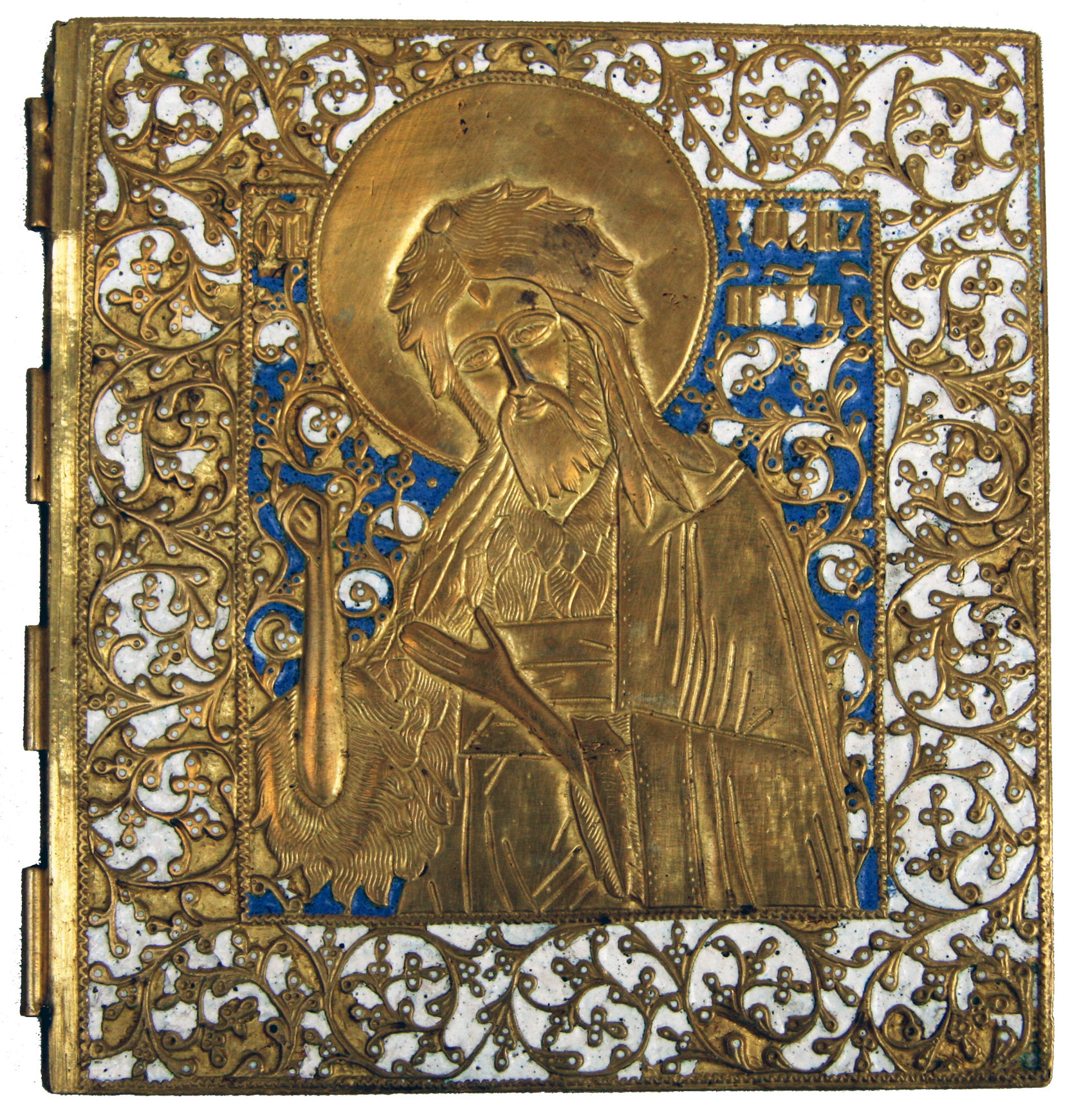

Icon "Saint Nicholas",
Late 19th – early 20th centuries
Late 19th – early 20th centuries
Icon "Intercession of the Theotokos or "The Protection of Our Most Holy Lady Theotokos and Ever-Virgin Mary". Late 18th –early 19th centuries, Zabaikalskaya oblast
Icon "Saint Stephen, Archdeacon and First Martyr". The 18th century
Icon "Lord of Hosts Savaof"
Late 19th –early 20th centuries, Zabaikalskaya oblast
Late 19th –early 20th centuries, Zabaikalskaya oblast
Icon "Saint Christopher"
Fragment of the icon with the depiction
of Saint John the Baptist. The 19th century
of Saint John the Baptist. The 19th century
Icon "Mother of God Joy of All Who Sorrow". The 19th century
Icon – three-folded amulet with the depiction of Saint Nicholas and Saints. The 19th century
Thurible incense
The 19th century
The 19th century
Cross
The 19th century
The 19th century












Material culture
Material culture
Preserving old tradition and customs, mode of life, spiritual poems, language, iconography, hand –written and old –printed books, architecture, national traditional outfits has always been one of the priority tasks for the Old Believers. Villages and settlements of the Old Believers are notable for their unique appearance. If you are not familiar with their unique culture and visit their settlements for the first time, you will be astonished by the beauty of their large houses, large windows with carved plat bands and painted shutters. The houses are also painted with bright colours. The Old Believers know how to create beauty around them.
In the village of Tarbagatay wooden houses stay along the road like fortifications. Gates are high and impregnable. Windows are located high above the ground: one can hardly touch them with hands. Each house is brightly painted. Exotic flowers, beautiful birds are depicted on the gates. Various applied art techniques of many peoples are presented in their architecture: woodcarving from North, painting of the Ukrainian and Buryat people. Local lore museums of Buryatia possess many ancient garments of the Old Believers. Nowadays, the Old Believers still wear traditional national outfits for great feasts and holidays.
In the village of Tarbagatay wooden houses stay along the road like fortifications. Gates are high and impregnable. Windows are located high above the ground: one can hardly touch them with hands. Each house is brightly painted. Exotic flowers, beautiful birds are depicted on the gates. Various applied art techniques of many peoples are presented in their architecture: woodcarving from North, painting of the Ukrainian and Buryat people. Local lore museums of Buryatia possess many ancient garments of the Old Believers. Nowadays, the Old Believers still wear traditional national outfits for great feasts and holidays.


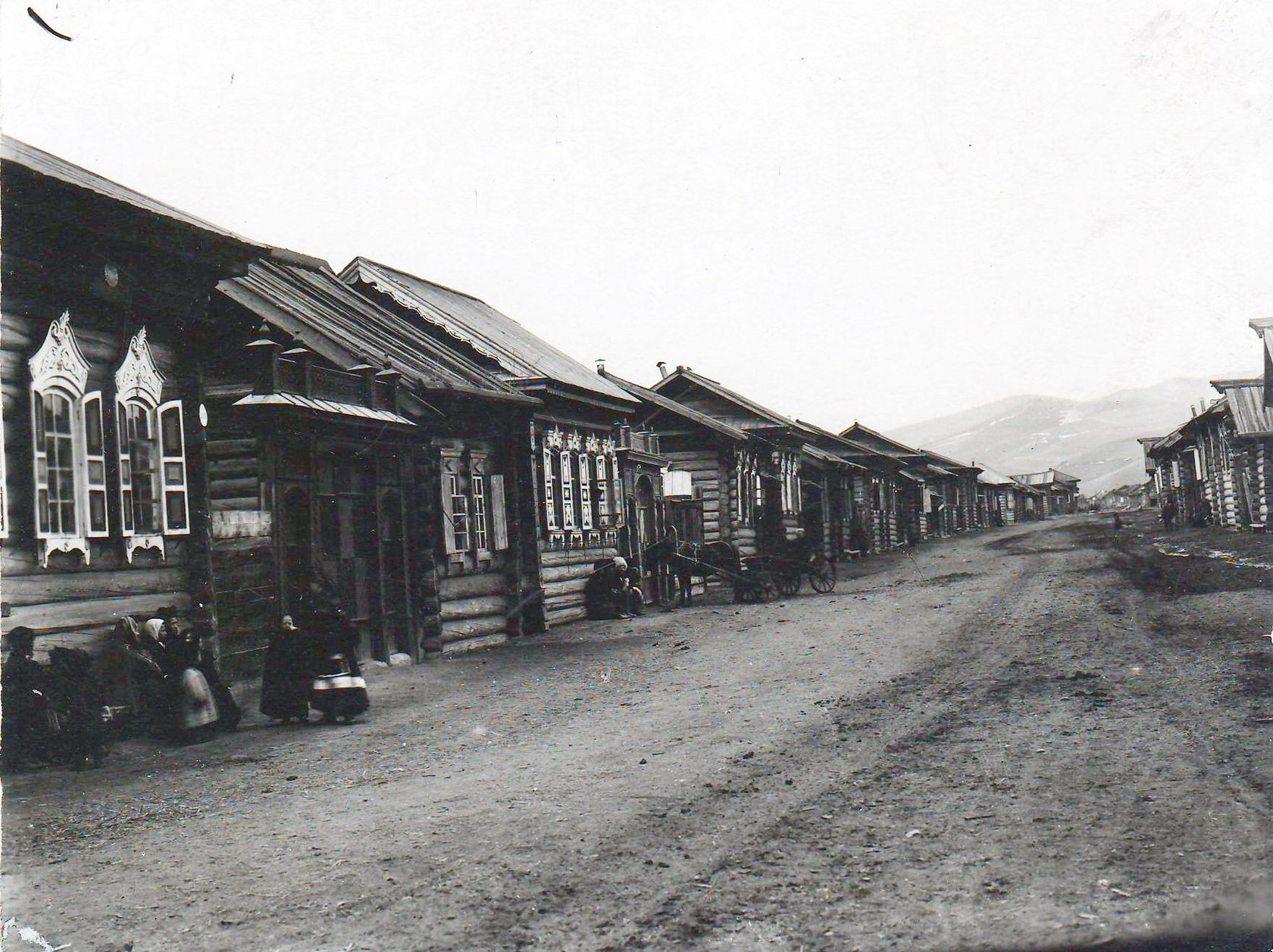
One of the streets of the village of Tarbagatay
Early 20th century
Early 20th century



There were several types of houses including four-walled, five-walled and [izba – svyaz] - a house consisting of several parts. Front outside walls were painted with ochre. Window trims were decorated with elegant carving work and shutters were decorated with painting. Rich families had wooden carved gates with a span canopy or roof. Beautiful images of flowers or birds, floral patterns were depicted on gates.





The houses were clean and tidy. The ceiling was painted with bright colours. The floor was covered with narrow hand- made rugs. In the past women cleaned the floor with sand and even covered the floor with sand. There were icons in the altar part of the room, called [Krasny Ugol] – [red corner]. Wide wooden benches went along the right and left walls from the altar. A mirror with a hand -woven towel called [rushnik], with its two ends hanging on the both sides of the mirror, decorated one of the walls. The table was set with a hand-made tablecloth. A polished samovar with boiled water was always available on the table.

Cradle
Late 19th century, Zabaikalskaya oblast
Late 19th century, Zabaikalskaya oblast
Bed
The 1940-s, Buryat-Mongolian Autonomous Soviet Socialist Republic
The 1940-s, Buryat-Mongolian Autonomous Soviet Socialist Republic
Carved frame
The 19th century, Zabaikalskaya oblast
The 19th century, Zabaikalskaya oblast
Spinning-wheel
Late 19th centuries, Zabaikalskaya oblast, village of Sharalday
Late 19th centuries, Zabaikalskaya oblast, village of Sharalday
Rubel, board for ironing linen
Late 19th century, Zabaikalskaya oblast
Late 19th century, Zabaikalskaya oblast






"Leader singer of the Kunaleisky Quire
Ryzhakov F.", 1963 Alexander Timin (1910-1993)
Ryzhakov F.", 1963 Alexander Timin (1910-1993)

Furniture in the house was made of wood. It was practical, stable and could serve for many years. In a larger part of the house there was a parents' bed and a table. There were also wooden benches and stools along the walls. A cradle - [kachka], was attached to ceiling. Other members of the family slept on the floor or on benches and [polaty], which was planking fixed between ceiling and stove and was used as a sleeping place. In [kuti], a kitchen place, divided from the other part of the room by a stove with [lezhanka], another sleeping place, and a wooden wall, there was a table, a cupboard, also there were benches and sets for [samovar], a metal container used to heat and boil water for tea. Some home utensil items were decorated with carving work or painted with mineral pigments and oil paints.
Iron (It is heated on stove),
Early 20th century, Zabaikalskaya oblast
Early 20th century, Zabaikalskaya oblast
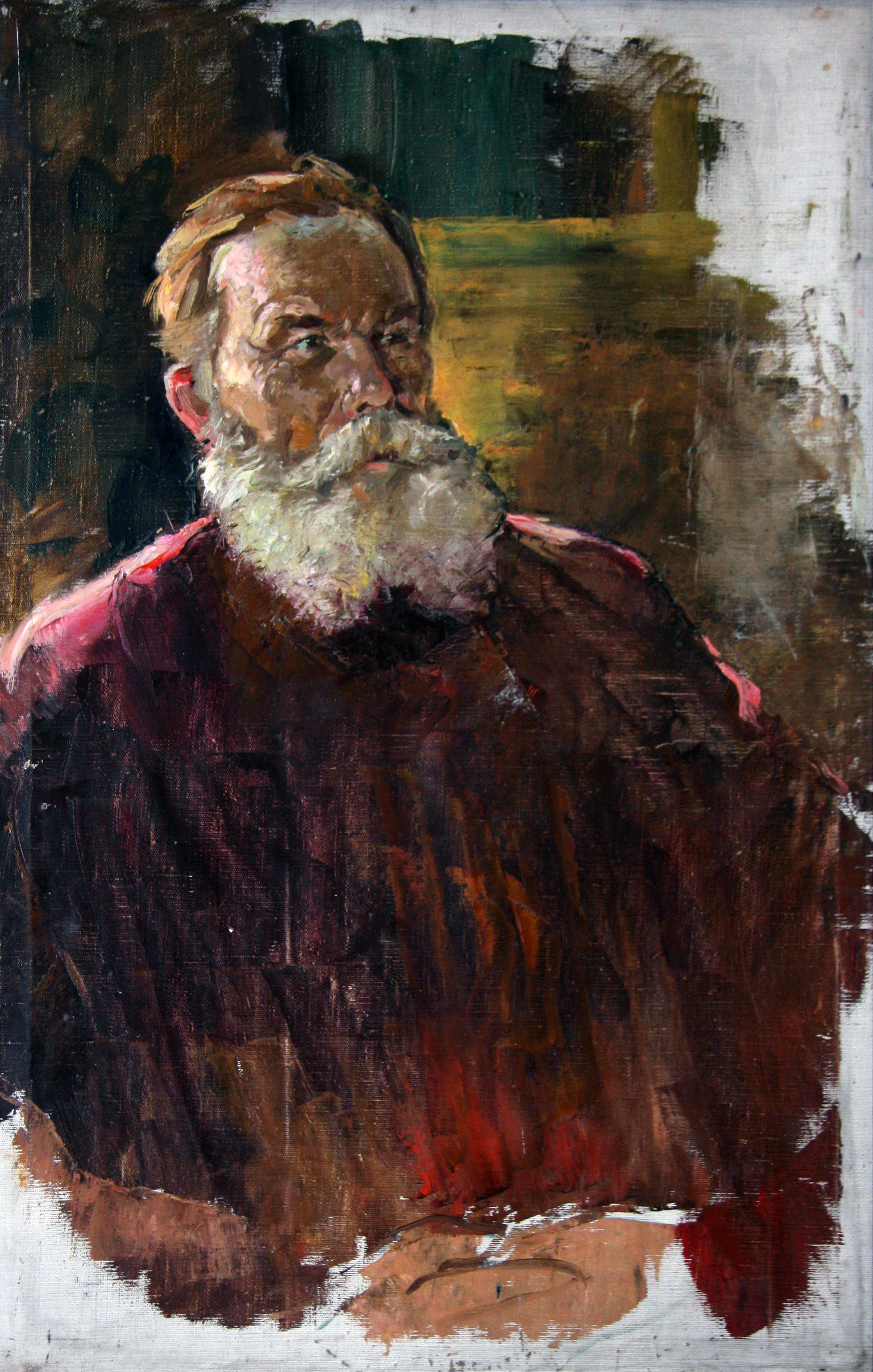
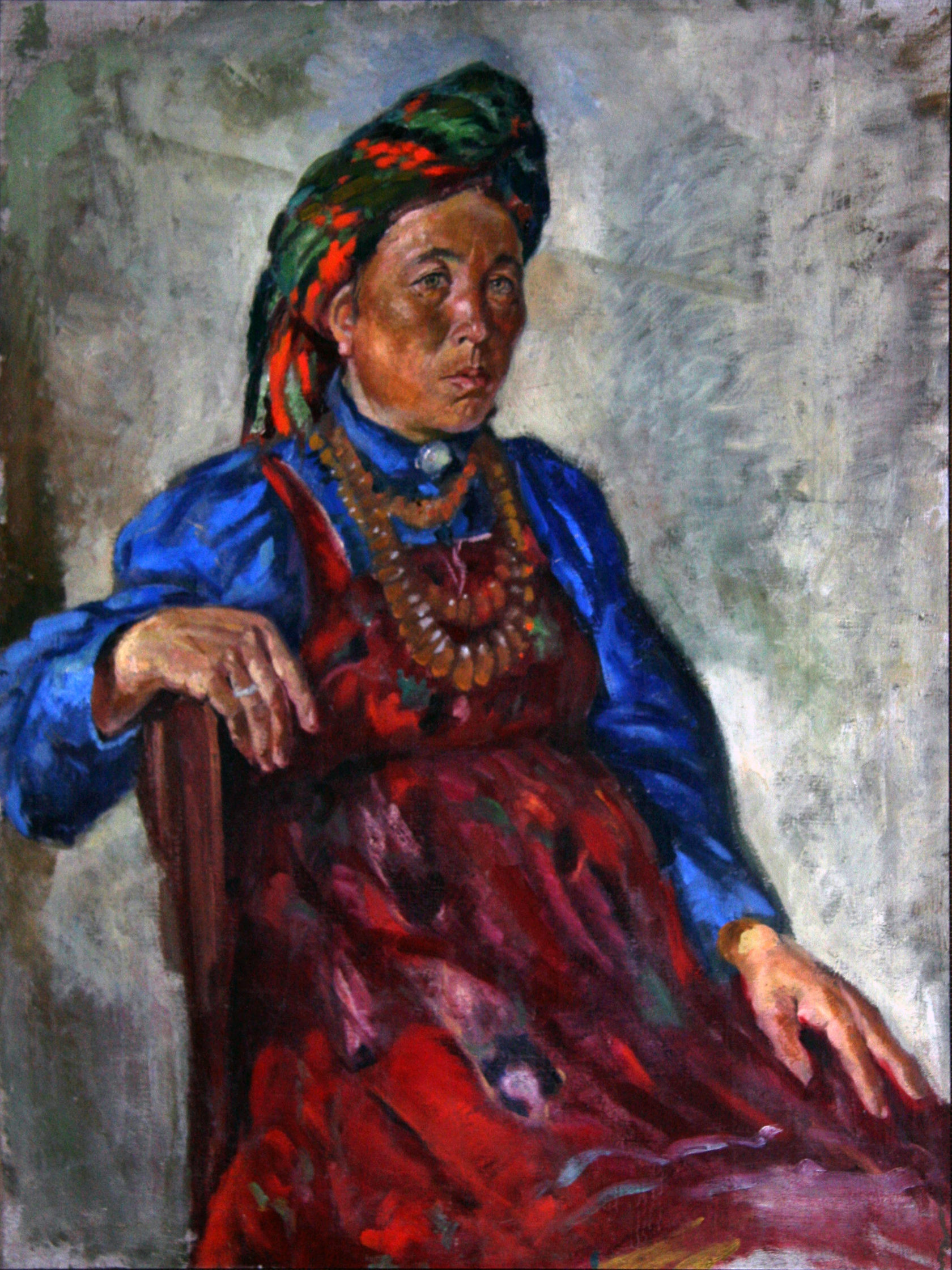
"Tyuryukhanova M. E.", 1940
Alexander Timin (1910-1993)
Alexander Timin (1910-1993)
Family of the Stakhanovite of the kolkhoz "Politotdel"
The 20th centuary Mukhorshibirsky region
The 20th centuary Mukhorshibirsky region




About seventy items on agriculture and items of the home handicraft manufacture including various types of fabric, woolen items and items made of plant textile fibro are presented in the museum collections.




Museums also possess items of home utensils made of wood. Masters used different parts of a tree: roots, trunk, branches, bark. The Old Believers' made kitchen utensils of pine, cedar, birch and other trees. Cooper's craft utensils including various items like [kadushki], [vodyanki], [kvashenki], [selnitsy] were used for storage water, flour, sour cabbage, to pickle mushrooms, fish and also to knead dough. Cracked wood work utensils like [laguna] and [ushaty] were produced of pine. Utensils made of birch bark including [tueski], [lukoshki] were used to storage dairy products, berries, salt and tea. Items were decorated with painting and geometrical patterns.


Ploughshare of [Rogalyukha],
wooden plow
Early 20th century, village Kharitonovka
wooden plow
Early 20th century, village Kharitonovka
Sickle
Early 20th century, village Tarbagatay
Early 20th century, village Tarbagatay
Comb for wool
Early 20th century, Zabaikalskaya oblast
Early 20th century, Zabaikalskaya oblast
Kopanitsa, device to loosen soil
Early 20th century, village of Kuitun
Early 20th century, village of Kuitun
Tues, birch bark containers
Late 19th –early 20th centuries, Zabaikalskaya oblast
Late 19th –early 20th centuries, Zabaikalskaya oblast
Lukoshko, bastbasket
Middle of the 20th century, Buryat –Mongolian Soviet Socialistic Republic, village of Kuitun
Middle of the 20th century, Buryat –Mongolian Soviet Socialistic Republic, village of Kuitun
Basket
Middle of the 20th century, Buryat –Mongolian Soviet Socialistic Republic, village of Kuitun
Middle of the 20th century, Buryat –Mongolian Soviet Socialistic Republic, village of Kuitun
Pot, cruse
Early 20th centuries, Zabaikalskaya oblast
Early 20th centuries, Zabaikalskaya oblast






Women and young unmarried women were good at weaving, spinning, sewing and embroidery. They used simple devices like [byordy] or more complicated stationary machines to weave belts, bandanas, rugs and carpets.
Patchwork was also the most popular craft. In this technique women made blankets, [karmany] – [pockets], which were hung on walls to keep small objects, [podrushniki] – [towels] and [poloviki] -floor rugs.
Patchwork was also the most popular craft. In this technique women made blankets, [karmany] – [pockets], which were hung on walls to keep small objects, [podrushniki] – [towels] and [poloviki] -floor rugs.


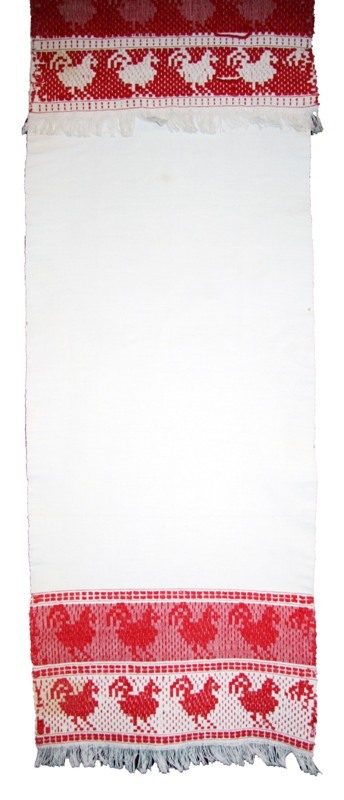
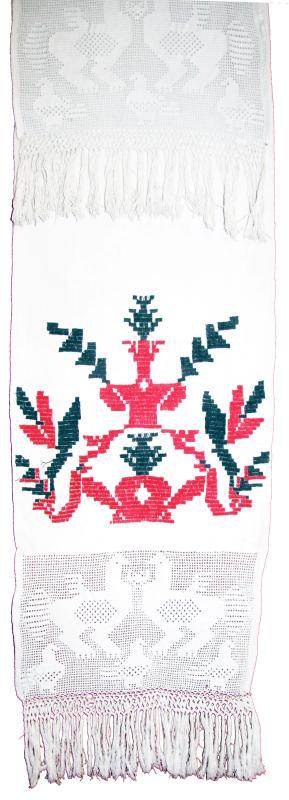

Yarn was produced with the help of a spinning wheel, consisting of such parts like vane, foot and one more detail carved from a solid piece of cedar or pine with roots. Vane was decorated with painting.
The detail of a spinning wheel called Foot was produced on a turning tool or was carved from wood. In the 19th century the Old Believers began to use [lezhaky] – a horizontal spinning –wheel. Some wooden details of a spinning –wheel the Old Believers produced on a lathe.
The detail of a spinning wheel called Foot was produced on a turning tool or was carved from wood. In the 19th century the Old Believers began to use [lezhaky] – a horizontal spinning –wheel. Some wooden details of a spinning –wheel the Old Believers produced on a lathe.

Women used [shveika] for sewing. It resembled spinning-wheels by its shape.
The Old Believers also decorated them with painting or carving work.
The Old Believers also decorated them with painting or carving work.


Byordo, loom for weaving narrow belts
Early 20th century, Zabaikalskaya oblast
Early 20th century, Zabaikalskaya oblast
Rushnik, handmade towel
Early 20th century, Zabaikalskaya oblast
Early 20th century, Zabaikalskaya oblast
Rushnik, handmade towel 1918,
village of Kuitun
village of Kuitun
Pillow, under elbow at earth bows during prayer
1950, village of Kalinovka
1950, village of Kalinovka
Karman, wall decoration to store sewing notions. On holidays Karman were hung on walls or windows instead curtains.
Early 20th century, Zabaikalskaya oblast, village of Kugoty
Early 20th century, Zabaikalskaya oblast, village of Kugoty
Lezhak, spinning- wheel
Early 20th century, Chitinsky uezd (district), village of Urluk
Early 20th century, Chitinsky uezd (district), village of Urluk






Shveika, device to hand sewing
Early 20th century, Zabaikalskaya oblast
Early 20th century, Zabaikalskaya oblast



Traditional garments
Traditional garments
The national traditional garment of the Old Believers has preserved elements of the clothes spread in North – Western, Southern and South-Western provinces in Russia in the 17th-18th centuries. Some elements of the national outfit were derived from the Ukrainian, Belorussian and Polish people.
The Old Believers began using Chinese fabrics to sew their traditional garments for feasts and holidays when they arrived to Zabaikalye. From the Buryat people they borrowed [gutuly] –[boots] made of soft leather and broadcloth.
The tradition to use furs of domestic and wild animals in sewing winter outerwear was also borrowed from the Buryats. The Old Believers lived in isolation from other local peoples of Eastern Siberia. They wore the traditional national garments till the 1960-s.
The Old Believers began using Chinese fabrics to sew their traditional garments for feasts and holidays when they arrived to Zabaikalye. From the Buryat people they borrowed [gutuly] –[boots] made of soft leather and broadcloth.
The tradition to use furs of domestic and wild animals in sewing winter outerwear was also borrowed from the Buryats. The Old Believers lived in isolation from other local peoples of Eastern Siberia. They wore the traditional national garments till the 1960-s.
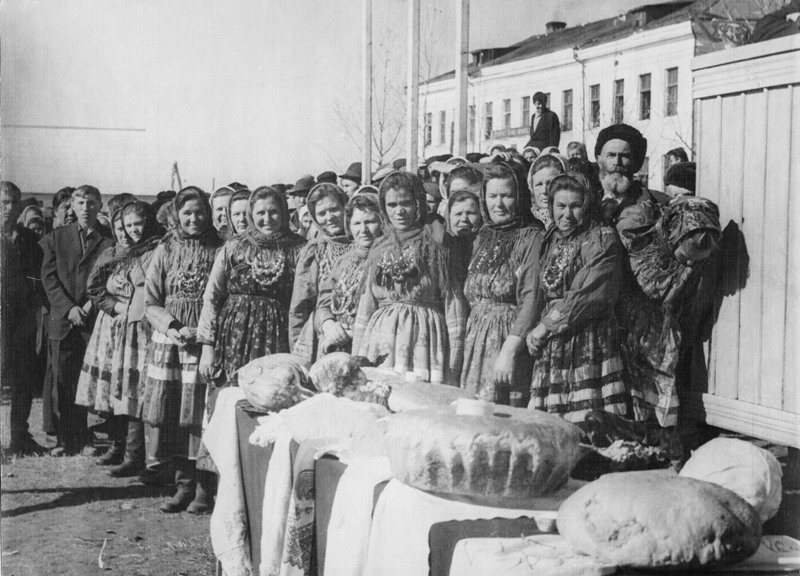


The National Museum of the Republic of Buryatia possesses a rich collection of the traditional garments of the Old Believers consisting of ten ensembles of women's festive garments including winter outerwear.
[Sarafan] is a dress spread in Northern provinces of Russia in late 17th – early 18th centuries. Women's national garment consists of twelve elements that can be divided into five subgroups.
The 1st group contains festive and daily winter outerwear including fur coats – [shuba], gowns, [kormushka], [bekesha]; the 2nd group contains festive and daily summer clothes – [sarafan], skirt, shirt, [zapon] – [apron]; the 3d group: hand -made women's and men's belts; the 4th group: festive and daily headdresses- [kichka], [kokoshnik] and [podzatylnik]; the 5th group- [atlas] – [shawl] or [headscarf] and hand-weaved garters for shoes.
[Sarafan] is a dress spread in Northern provinces of Russia in late 17th – early 18th centuries. Women's national garment consists of twelve elements that can be divided into five subgroups.
The 1st group contains festive and daily winter outerwear including fur coats – [shuba], gowns, [kormushka], [bekesha]; the 2nd group contains festive and daily summer clothes – [sarafan], skirt, shirt, [zapon] – [apron]; the 3d group: hand -made women's and men's belts; the 4th group: festive and daily headdresses- [kichka], [kokoshnik] and [podzatylnik]; the 5th group- [atlas] – [shawl] or [headscarf] and hand-weaved garters for shoes.

[Sarafan] is a wide flared skirt with narrow shoulder straps, slightly gathered in frills at the waistline. The shirt is compound: the upper part is called [chekhlik] and the lower part is similar to a skirt and called [stanushka]. Its low edge is sewed with threads.
Sleeves are joined to bodice in a specific decorative device, which is a stitch made of threads of different colours. [Zapan] – [apron] is worn over Sarafan. Zapan and zapan are decorated with two or three rows of silk ribbons of bright contrast colours that are sewed to the fabric by a sewing machine at the hemline.
Sleeves are joined to bodice in a specific decorative device, which is a stitch made of threads of different colours. [Zapan] – [apron] is worn over Sarafan. Zapan and zapan are decorated with two or three rows of silk ribbons of bright contrast colours that are sewed to the fabric by a sewing machine at the hemline.
In winter and in the inter-season period the Old Believers wore hip length jackets insulated with sheep skin, wool or cotton called [kurmushka] and [bekesha]. The most archaic kinds of outerwear like gowns and fur coats were worn by women and men. Men's gown was usually long to the floor and women's gown was hip length. Gowns and fur coats – [shuba] were wide push open broadening downwards, with sleeves which were longer than sleeves of other outerwear clothes. Standing collar turning to shawl collar was decorated with velvet or lace. Gowns and shubas were worn draping around the shoulders when people went to pray, that is why they were called [molennaya] clothes - "outfits for prayer".
Women's headdress [kichka] was worn by married women.
Women's headdress [kichka] was worn by married women.
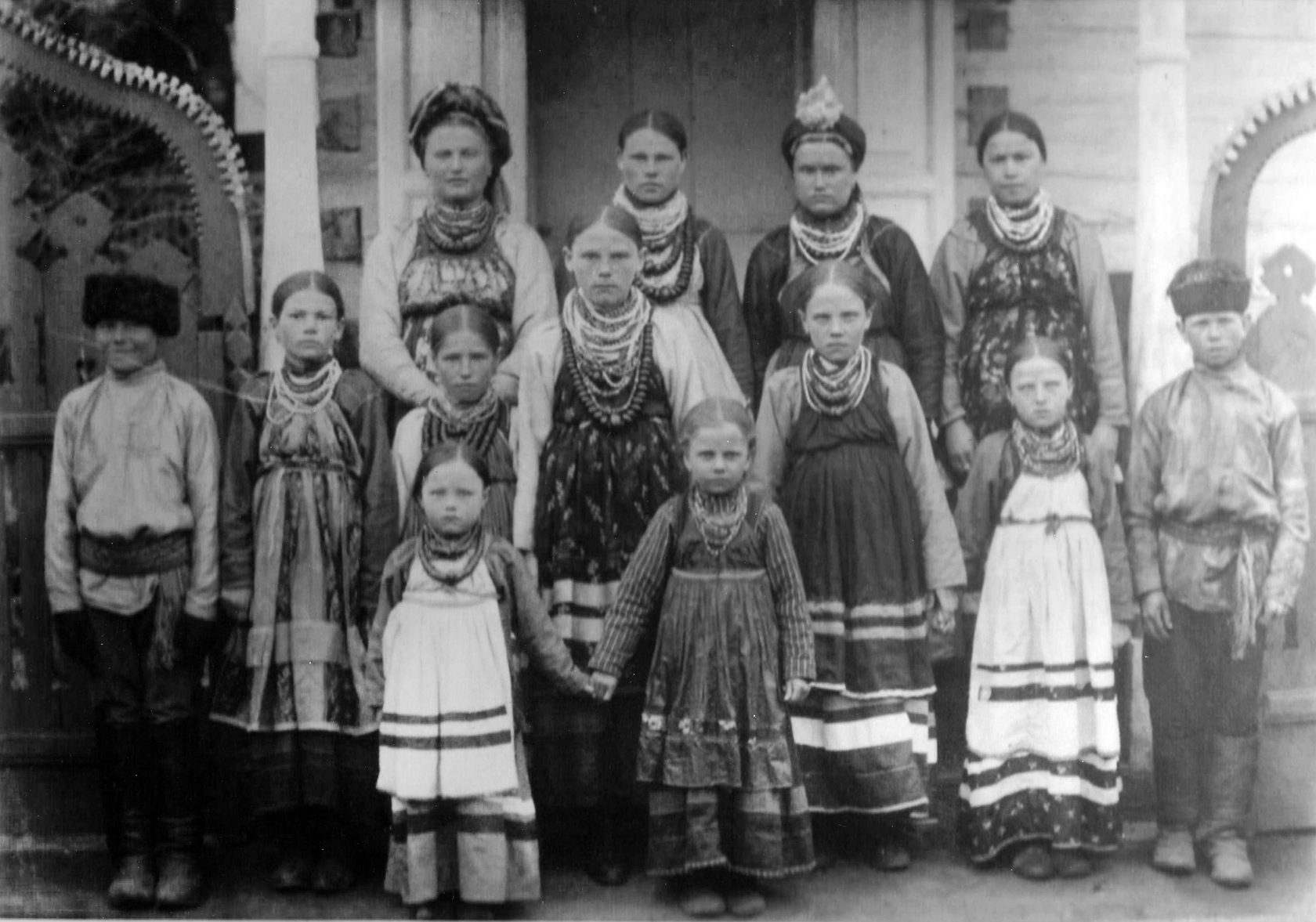




Men's clothes of the Old Believers including [kosovorotka] –[shirts], trousers, hand –made belts, [zipuny], [tulups] – [jackets insulated with sheepskin], didn't differ much from clothes men wore in different provinces in Russia in the 18th century. Children and teenagers had the same clothes as adults' clothes.
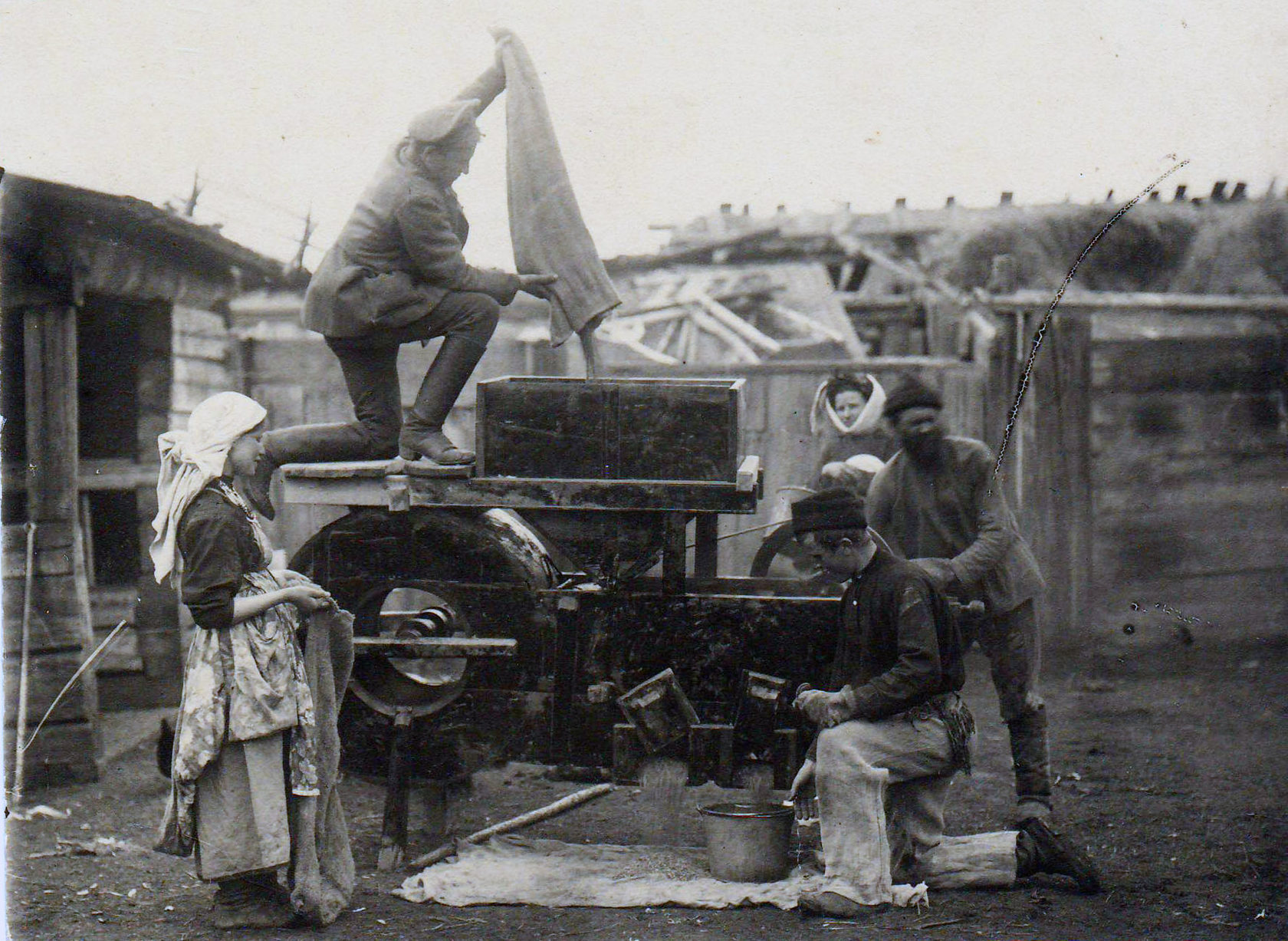













Celebration of the Day of agricultural worker, October, 9, 1966, village of Mukhorshibir
Maiden's outfit: shirt, [sarafan], [zapan], skirt, headscarf, [monisto] beads.
First half of the 20th century, Zabaikalskaya oblast, Buryat –Mongolian Soviet Socialistic Republic
First half of the 20th century, Zabaikalskaya oblast, Buryat –Mongolian Soviet Socialistic Republic
Women's festive outfit with [Kurma],
maidens' warm outerwear. Late 19th – early 20th centuries, Zabaikalskaya oblast
maidens' warm outerwear. Late 19th – early 20th centuries, Zabaikalskaya oblast
Women's festive outfit with [Kurma],
maidens' warm outerwear. Late 19th – early 20th centuries, Zabaikalskaya oblast
maidens' warm outerwear. Late 19th – early 20th centuries, Zabaikalskaya oblast
Women's festive outfit with [Kurma],
maidens' warm outerwear. Late 19th – early 20th centuries, Zabaikalskaya oblast
maidens' warm outerwear. Late 19th – early 20th centuries, Zabaikalskaya oblast
Women's festive outfit with gown
Late 19th – early 20th centuries, Zabaikalskaya oblast
Late 19th – early 20th centuries, Zabaikalskaya oblast
Grain handling






Woven belts
Women wove belts with multicolored cotton threads on small looms called [krosna].
Women's belts were 2,5 meters long and 8-15 cm wide. Belts had specific patterns – rhombus, triangles, zigzags.
Men's sashes were longer than women's belts and were wrapped around the waist two times. Patterns on men's belts were more laconic.
Women wove belts with multicolored cotton threads on small looms called [krosna].
Women's belts were 2,5 meters long and 8-15 cm wide. Belts had specific patterns – rhombus, triangles, zigzags.
Men's sashes were longer than women's belts and were wrapped around the waist two times. Patterns on men's belts were more laconic.
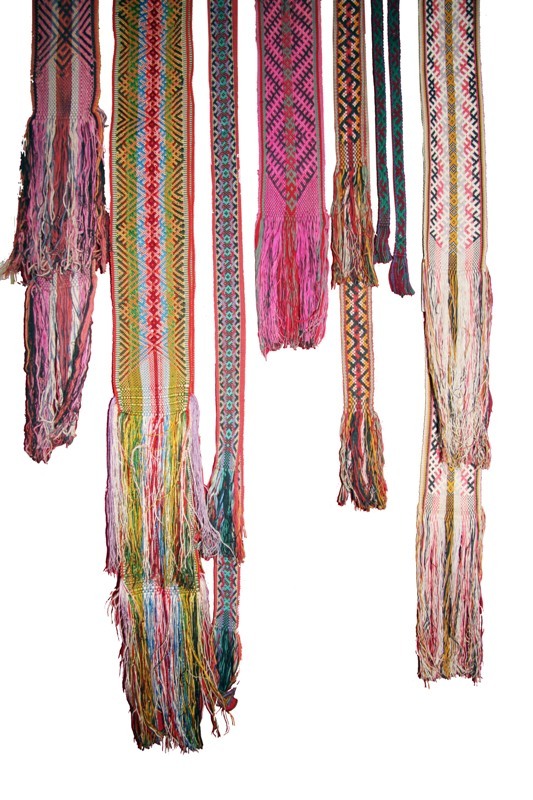
Not every woman was good at weaving. For weaving belts, women used the same looms they used for weaving fabric and narrow carpets. The loom was slightly transformed with a wooden frame with metal pins to divide threads by different colours. Women used cotton and silky threads of various thickness. Palette and quality of threads was chosen by a woman up to her own preferences. The thinner threads were chosen, the higher the belt's value was.
The Old Believers were wearing a belt for the first time after being baptized. A baby got a cross on a string after the complete baptism ritual with the three times immersion into the holy water. Then, a baby was dressed in a special shirt for baptism and after that he got his first belt. Handmade belts were estimated higher. Belts for babies were very narrow as lace. Each year at Easter, a baby got a new belt with a new stripe added to it. Thus, belt width indicates its owner's age. The elder a person is a wider belt he wears. Women's and men's belts differed by their ornaments, patterns and pallet. Belts of unmarried women were woven in gentle and bright (contrast) palette. Belts for men were featured by laconic patterns done in gloomy colours. The most interesting and contrast combinations of colours were typical for the belts for the elder people. Belts were very wide and had beautiful ornaments.
Belt is one of the most important elements in the outfit of the Old Believers. Shame on an individual to appear among the people without wearing a belt. There is a Russian idiom "an unbelt person" which means "a person who has lost good human qualities and behaves badly in the society".
[Karman] – [pocket] is another essential accessory of a traditional garment of the Old Believers. It is sewed from a thick fabric, basically of a woolen tissue, and is worn attached to belt.
The Old Believers were wearing a belt for the first time after being baptized. A baby got a cross on a string after the complete baptism ritual with the three times immersion into the holy water. Then, a baby was dressed in a special shirt for baptism and after that he got his first belt. Handmade belts were estimated higher. Belts for babies were very narrow as lace. Each year at Easter, a baby got a new belt with a new stripe added to it. Thus, belt width indicates its owner's age. The elder a person is a wider belt he wears. Women's and men's belts differed by their ornaments, patterns and pallet. Belts of unmarried women were woven in gentle and bright (contrast) palette. Belts for men were featured by laconic patterns done in gloomy colours. The most interesting and contrast combinations of colours were typical for the belts for the elder people. Belts were very wide and had beautiful ornaments.
Belt is one of the most important elements in the outfit of the Old Believers. Shame on an individual to appear among the people without wearing a belt. There is a Russian idiom "an unbelt person" which means "a person who has lost good human qualities and behaves badly in the society".
[Karman] – [pocket] is another essential accessory of a traditional garment of the Old Believers. It is sewed from a thick fabric, basically of a woolen tissue, and is worn attached to belt.

Headdress
Headdresses indicated the social status of women.
[Kichka] or [volosnik] is an ancient headdress worn by married women. The kichka is a hat covering completely the woman's hair. The front part of it, above the forehead, was made of birch bark or wooden planch. By shape it resembles horns or hoof. It is decorated by [opoyaska], a narrow stripe, decorated by beadwork. This element remained from [kokoshnik], the 16th-18th centuries traditional Russian women's headdress. Women were wearing [podzatylnik] on the back of the head below the kichka. It was made of a golden lace and decorated with beadwork. The kichka was worn together with [atlas] – [head scarf] or [cashmere shawl], in winter, which were worn over the kichka. [Atlas] is a big head scarf, 2 meters X 2 meters, made of Capron thread. This element of the outfit was brought by Old Believers women from Europe. Young women often decorated shawl or atlas with flowers or brooch. Kichka symbolizes the sacrament that the woman belongs to one man - her husband.
Headdresses indicated the social status of women.
[Kichka] or [volosnik] is an ancient headdress worn by married women. The kichka is a hat covering completely the woman's hair. The front part of it, above the forehead, was made of birch bark or wooden planch. By shape it resembles horns or hoof. It is decorated by [opoyaska], a narrow stripe, decorated by beadwork. This element remained from [kokoshnik], the 16th-18th centuries traditional Russian women's headdress. Women were wearing [podzatylnik] on the back of the head below the kichka. It was made of a golden lace and decorated with beadwork. The kichka was worn together with [atlas] – [head scarf] or [cashmere shawl], in winter, which were worn over the kichka. [Atlas] is a big head scarf, 2 meters X 2 meters, made of Capron thread. This element of the outfit was brought by Old Believers women from Europe. Young women often decorated shawl or atlas with flowers or brooch. Kichka symbolizes the sacrament that the woman belongs to one man - her husband.
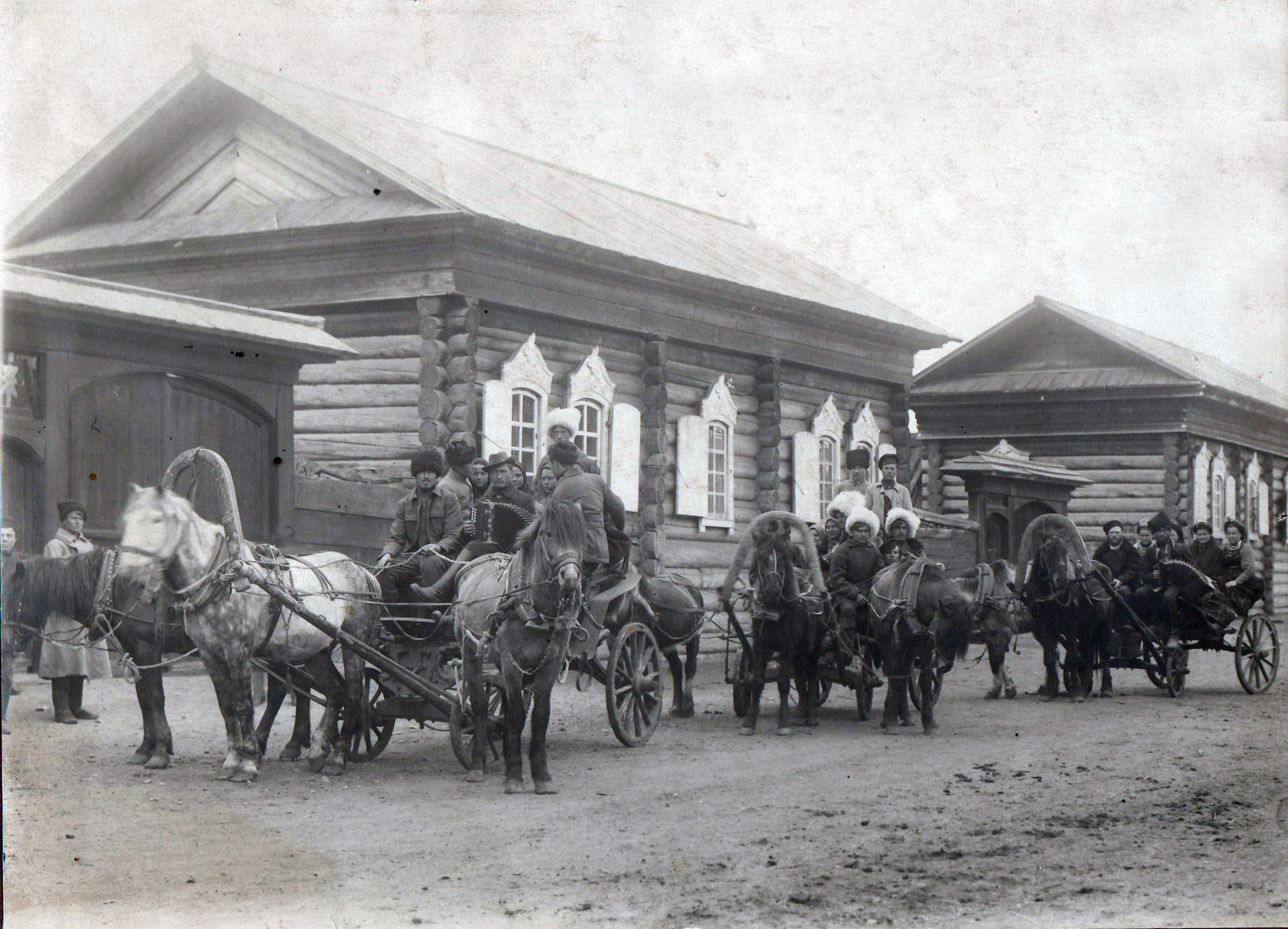
Young unmarried women wore bright head bandages, bandana – type, called [nachelnik]. Men wore felt hats or woolen cap - [furazhka].

Married and unmarried women wore breast decoration [monista] – amber beads which are widely presented in the museum collections.











Belts and frills
Late 19th – early 20th centuries,
Zabaikalskaya oblast
Late 19th – early 20th centuries,
Zabaikalskaya oblast
Kokoshik
А traditional Russian headdress worn by married women. The term is derived from the Old Slavic word [kokosh] meaning "hen" or "cockerel". Kokoshik is a tall, nimbus or crest shaped headdress which is tied at the back of the head with [Podzatylnik], a wide strap of velvet, brocade or gold embroidery. Middle of the 19th century, Zabaikalskaya oblast.
А traditional Russian headdress worn by married women. The term is derived from the Old Slavic word [kokosh] meaning "hen" or "cockerel". Kokoshik is a tall, nimbus or crest shaped headdress which is tied at the back of the head with [Podzatylnik], a wide strap of velvet, brocade or gold embroidery. Middle of the 19th century, Zabaikalskaya oblast.
Olga Rymareva (Ryzhakova) is one of the oldest participants of the Bolshekunaleisky Quire. She is the founder and curator of the Museum-Memorial of her father Alexander Ryzhakov.




Cultural heritage
Cultural heritage
Musical tradition of the Old Believers
If you visit a village of the Old Believers, you will get into the 17th -18th centuries mode of life of the Russian people, and also will enjoy sounds of ancient music…
The Znamenny Chant or Kryuki Chant is unique chanting tradition of the Old Believers which is unison, melismatic liturgical singing. Znamenny melodies are part of a system consisting of Eight Tones. This ancient tradition was carefully transmitted by one generation to another. It got the name from specific signs, not notes, called [kryuki] –[hooks], as they resemble hooks. After the Patriarch Nicon's reforms, this chant was preserved as the only liturgical singing in the Old Believers' Orthodox Church.
If you visit a village of the Old Believers, you will get into the 17th -18th centuries mode of life of the Russian people, and also will enjoy sounds of ancient music…
The Znamenny Chant or Kryuki Chant is unique chanting tradition of the Old Believers which is unison, melismatic liturgical singing. Znamenny melodies are part of a system consisting of Eight Tones. This ancient tradition was carefully transmitted by one generation to another. It got the name from specific signs, not notes, called [kryuki] –[hooks], as they resemble hooks. After the Patriarch Nicon's reforms, this chant was preserved as the only liturgical singing in the Old Believers' Orthodox Church.





The Old Believers strictly followed religious postulates in their daily life. Folk songs were performed as liturgical chanting, thus, it was done on a very high level.

Polyphony was one of the distinctive features of the Old Believers' singing. N. I. Dorofeev wrote: "A talented singer would not start singing alone because monophony is excluded. To sing a song we need at least two singers". To perform Capella singing was considered as the most honourable ability. Annually, ten or twenty boys learned liturgical chant from a talented singer in special schools.
Spiritual poetry was another kind of art the Old Believers were fond of. Narrators knew many literature compositions, poems, tales and historical novels about the hard times of the Old Believers, their struggle for faith, sufferings and prosecutions, soul salvation and anticipation of the day of doom. Spiritual poems taught about penance and reminded people about eternal torment for their sins.
Spiritual poetry was another kind of art the Old Believers were fond of. Narrators knew many literature compositions, poems, tales and historical novels about the hard times of the Old Believers, their struggle for faith, sufferings and prosecutions, soul salvation and anticipation of the day of doom. Spiritual poems taught about penance and reminded people about eternal torment for their sins.
The Bolshekunaleisky (Tarbagatay) folk choir of the Old Believers in Moscow. 1989. The State archive of the Republic of Buryatia



Traditional cuisine
Traditional cuisine
There are so many delicious dishes and foods in the Old Believers' cuisine. Nutritional traditions of the Old Believers have been formed as the result of adaptation to the climatic and natural conditions of Siberia.
Wheat and rye bread is one of the main products. On great holidays women bake various types of foods made of flour called
[presnushki] including [lepeshki] - pan cakes, [pirozhki] – small stuffed buns filled with cabbage, carrots, apples, mushrooms, potatoes, etc., [bliny] –thin griddle cakes, [vatrushki] – cakes with a cottage cheese, raisins and bits of fruit, [syrniki] – fried curd fritters, [pirogi] -pies filled with carrots, apples, mushrooms, berries, cabbage and fish and many other foods that are served with sour cream, cottage cheese, jam, fruit and berries preserves and honey. Dough is used for making noodles.
For breakfast women cook [kasha] –porridge prepared of a wide variety of whole-grain cereals with milk: buckwheat, millet and barley. Meat is cooked as the main stuffed and is eaten with salads, smashed potatoes, ham and cheese. Meat is one of the main ingredients to cook [kotlety] - pan-fried cutlet-shapped patties, various galettes and dumplings. The traditional staple of soups such as [shchi], [okroshka], [borsh], grain and vegetable –based soups, are the main dishes in the cuisine of the Old Believers.
Fish is another popular product. A greater variety of fish are preserved by salting, pickling and smoking. The traditional drinks of the Old Believers include [kvass] –bread-based drink, [botvinya], [kissel] – fruit-based drink, [solodukha]. Herbal teas and drinks made of dried leaves of raspberry, currants, blueberries, chaga mushroom are very healthy and are used as food, drinks and medicine. Fresh and preserved berries, vegetables, mushrooms, honey, various desserts and condiments made from cooking fruits and berries, cedar nuts and oil made of cedar are also included into the daily ration.
Wheat and rye bread is one of the main products. On great holidays women bake various types of foods made of flour called
[presnushki] including [lepeshki] - pan cakes, [pirozhki] – small stuffed buns filled with cabbage, carrots, apples, mushrooms, potatoes, etc., [bliny] –thin griddle cakes, [vatrushki] – cakes with a cottage cheese, raisins and bits of fruit, [syrniki] – fried curd fritters, [pirogi] -pies filled with carrots, apples, mushrooms, berries, cabbage and fish and many other foods that are served with sour cream, cottage cheese, jam, fruit and berries preserves and honey. Dough is used for making noodles.
For breakfast women cook [kasha] –porridge prepared of a wide variety of whole-grain cereals with milk: buckwheat, millet and barley. Meat is cooked as the main stuffed and is eaten with salads, smashed potatoes, ham and cheese. Meat is one of the main ingredients to cook [kotlety] - pan-fried cutlet-shapped patties, various galettes and dumplings. The traditional staple of soups such as [shchi], [okroshka], [borsh], grain and vegetable –based soups, are the main dishes in the cuisine of the Old Believers.
Fish is another popular product. A greater variety of fish are preserved by salting, pickling and smoking. The traditional drinks of the Old Believers include [kvass] –bread-based drink, [botvinya], [kissel] – fruit-based drink, [solodukha]. Herbal teas and drinks made of dried leaves of raspberry, currants, blueberries, chaga mushroom are very healthy and are used as food, drinks and medicine. Fresh and preserved berries, vegetables, mushrooms, honey, various desserts and condiments made from cooking fruits and berries, cedar nuts and oil made of cedar are also included into the daily ration.






Modern Old Believers
"Toward the Old Believers' descendants"
The traditional lifestyle of the Old Believers remained unchanged up to the middle of the 19th century due to their residence in remote settlements and unreachable places deep in the taiga and mountains.
"Toward the Old Believers' descendants"
The traditional lifestyle of the Old Believers remained unchanged up to the middle of the 19th century due to their residence in remote settlements and unreachable places deep in the taiga and mountains.
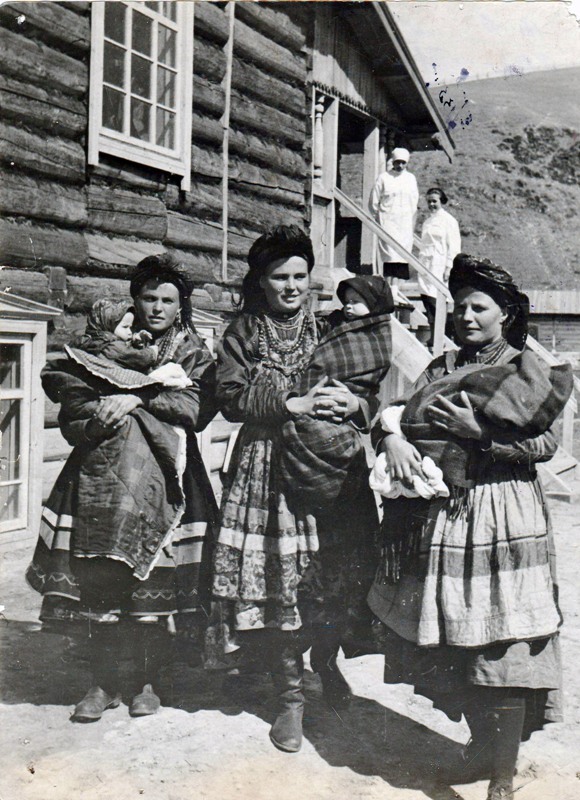
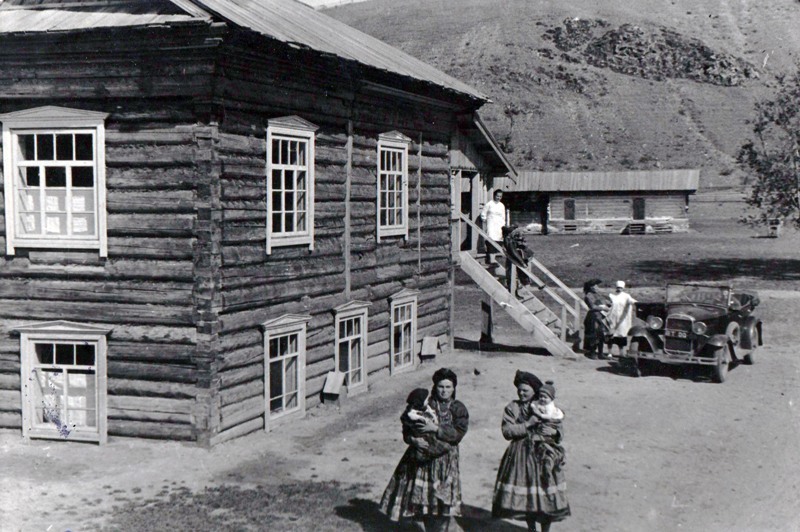
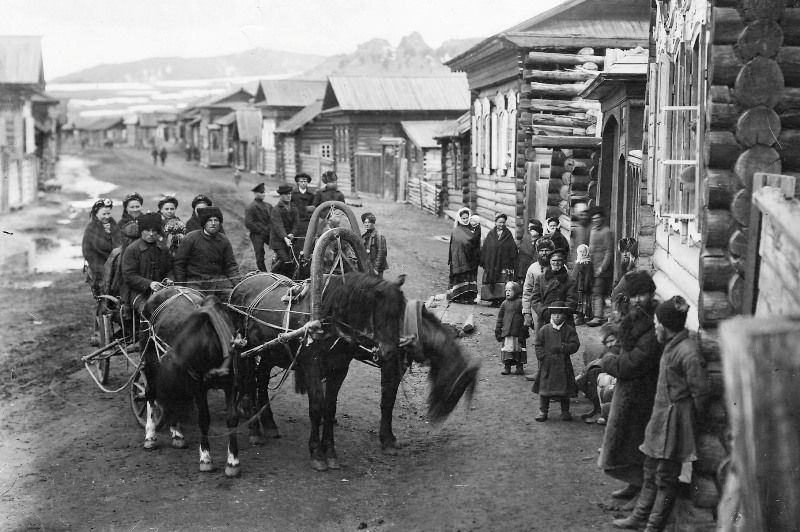
Today, rare items and exhibits displaying the culture and lifestyle of the Old Believers are kept in several historical museums in Buryatia including the Commemorative Museum – House of Isai Kalashikov" (the museum is located in the village of Sharalday), "The archaeological museum of the history, mode of life of the Old Believers' in Zabaikalye", "The Old Believers Russian Orthodox Temple in honour of Exaltation of the Cross of the Lord" (located in the village of Tarbagatay) and "The Khorinsky Local History Museum" (located in the village of Khorinsk).
The route to the village of the Old Believers starts near the mountain "Sleeping lion"
The Old Believers' complex of the Father Sergius opened in 2001, is located in the center of the village of Tarbagatay. The ancient Tarbagatay village was considered as the center of the Old Believers' culture till the 1930-s. In 1765 the group of "Polish new settlers" numbering eight hundred and twenty-four people was resided in the villages of Tarbagatay, Kuitun, Kunaley, Desyatnikovo and Burnashevo, not far from the town of Verkheudinsk. In September, 27, 2003 The Old Believers' Orthodox Church of the Exaltation of the Cross of the Lord in the village of Tarbagatay was consecrated by the Patriarch of Moscow and all Russia Alexander in honour of the Exaltation of the Precious and Life-Giving Cross. In this Church liturgical service is performed according to ancient canonical texts which were brought by the Old Believers when they arrived in Zabaikalye.




Maternity hospital in the kolkhoz "Red Banner of Labour",
the 20th century, village of Bichura
the 20th century, village of Bichura
Easter open air celebrations
Early 20th century, village of Tarbagatay
Early 20th century, village of Tarbagatay



The Commemorative Museum-House of Isai Kalashnikov was founded in 1991 in the village of Sharalday in honour to commemorate the heritage of the writer Isai Kalashnikov (1931-1980), the author of the world famous novel about Genghis Khan. He was born in the village of Sharalday and his family belongs to the Old Believers. In his novels he describes in details the traditions and customs of his people.
You are welcome to taste delicious dishes of Old Russian cuisine…when you think you are full with spiritual knowledge...




The museum complex consists of the two parts. The first part is presented by the exposition dedicated to Isai Kalashikov: it displays his handwritten scenarios and notes, books and magazines, documents and photographs, as well as his personal belongings including a printing machine, suit and some small items. The second part of the museum complex is an ethnographical territory displaying household of an ordinary peasant of the 18th century. The ethnographical part consists of a traditional house with typical interior and the yard with household outbuildings. The museum workers organize for tourists various indoor and outdoor activities on the traditional culture and customs of the Old Believers. In the museum there is a pottery studio where tourists can make some items of the traditional kitchen utensils and keep them as souvenirs. They also can taste a fresh bread and [oladi] –pancakes baked in a Russian brick stove and listen to ancient melodies.
The traditional musical culture of the Old Believers is kept alive by folk musical groups, founded in the village of Tarbagatay in the 1920-s. Currently, there are twelve musical groups in the Tarbagataisky region of the Republic of Buryatia. Many of them participated in different interregional, republican and international musical contests and festivals. The ethno group "Sud'binushka" is one of the most famous musical groups known to the public in Russia, in the Republic of Buryatia and abroad.
The Bolshekunaleisky Folk Choir of the Old Believers' was founded in 1927. Among its first organizers were F. Ryzhakov, V. Ivanov and F. Bryansky. In 1967 the group was awarded the title "People's folk group". For many years the choir was led by the Honoured Artist Fyodor Ryzhakov. Since its establishment the choir has been the legend in the world of the folk music for eighty years. The famous chant of the Old Believers of the Kunaley school is among the subjects in the curriculum of many musical institutions, colleges and conservatoriums.
The history is bizarre and it never ceases to amaze us with twists of fate. The Old Believers of Buryatia is one of those cases. In a far-off Zabaikalye, close to the Mongolian steppes, the people who were exiled for their beliefs, found their new home.
They have kept their history through the ages as well as their customs and traditions. Thanks to them today we are able to see and to know about Pre-Petrine Russia.
The traditional musical culture of the Old Believers is kept alive by folk musical groups, founded in the village of Tarbagatay in the 1920-s. Currently, there are twelve musical groups in the Tarbagataisky region of the Republic of Buryatia. Many of them participated in different interregional, republican and international musical contests and festivals. The ethno group "Sud'binushka" is one of the most famous musical groups known to the public in Russia, in the Republic of Buryatia and abroad.
The Bolshekunaleisky Folk Choir of the Old Believers' was founded in 1927. Among its first organizers were F. Ryzhakov, V. Ivanov and F. Bryansky. In 1967 the group was awarded the title "People's folk group". For many years the choir was led by the Honoured Artist Fyodor Ryzhakov. Since its establishment the choir has been the legend in the world of the folk music for eighty years. The famous chant of the Old Believers of the Kunaley school is among the subjects in the curriculum of many musical institutions, colleges and conservatoriums.
The history is bizarre and it never ceases to amaze us with twists of fate. The Old Believers of Buryatia is one of those cases. In a far-off Zabaikalye, close to the Mongolian steppes, the people who were exiled for their beliefs, found their new home.
They have kept their history through the ages as well as their customs and traditions. Thanks to them today we are able to see and to know about Pre-Petrine Russia.




«Проект реализуется победителем конкурса «Общее дело» благотворительной программы
«Эффективная филантропия» Благотворительного фонда Владимира Потанина»
«Эффективная филантропия» Благотворительного фонда Владимира Потанина»



Project manager: Ph.D. of art history, Tatiana Boronoeva
Scientific editor: Doctor of historical sciences, Svetlana Buraeva
Authors of catalogue descriptions: L.F. Levitina, L.L.Tsyrempilova, T.A. Alekseeva, D.D.Khubitueva, Ts.-Kh. Ochirova, Z.A.Shagzhina
Project coordinators: Aryuna Balzhurova, Saiana Galsanova, Bair Gomboev
Photo: V.Zh. Tugutov
Translator: A.Ch. Gurueva
Longrid development: E.Shumal, O.Makhanova, A.Onokhov
The Museum wishes to thank:
Lyudmila Garmaeva, director of the National library of the Republic of Buryatia;
Butit Zhalsanova, director of the State Archives of the Republic of Buryatia;
Margarita Gorokhovskaya, director the Department of Culture and Tourism of the Mukhorshibirsky district;
Sergei Pali, priest of an ancient Orthodox church in Tarbagatay;
Olga Rymareva (Ryzhakova), member of the Tarbagatay (Bolshoikunalei) folk choir of the Old Believers;
Oksana Lappo, manager of Tarbagatay (Bolshoikunalei) folk choir of the Old Believers;
Andrei Levantuev, acting general director of the TV and Radio Company "Arig Us"
Scientific editor: Doctor of historical sciences, Svetlana Buraeva
Authors of catalogue descriptions: L.F. Levitina, L.L.Tsyrempilova, T.A. Alekseeva, D.D.Khubitueva, Ts.-Kh. Ochirova, Z.A.Shagzhina
Project coordinators: Aryuna Balzhurova, Saiana Galsanova, Bair Gomboev
Photo: V.Zh. Tugutov
Translator: A.Ch. Gurueva
Longrid development: E.Shumal, O.Makhanova, A.Onokhov
The Museum wishes to thank:
Lyudmila Garmaeva, director of the National library of the Republic of Buryatia;
Butit Zhalsanova, director of the State Archives of the Republic of Buryatia;
Margarita Gorokhovskaya, director the Department of Culture and Tourism of the Mukhorshibirsky district;
Sergei Pali, priest of an ancient Orthodox church in Tarbagatay;
Olga Rymareva (Ryzhakova), member of the Tarbagatay (Bolshoikunalei) folk choir of the Old Believers;
Oksana Lappo, manager of Tarbagatay (Bolshoikunalei) folk choir of the Old Believers;
Andrei Levantuev, acting general director of the TV and Radio Company "Arig Us"
Contact information
The National Museum of the Republic of Buryatia
670000, Republic of Buryatia, Ulan-Ude, Profsoyuznya street, 29
phone: 8 (3012) 21-29-09, 8 (3012) 21-40-08
e-mail: muzeyrb@mail.ru / muzeyrb_mib@mail.ru
website: http://muzeyrb.ru/
The State Archives of the Republic of Buryatia
670000, Republic of Buryatia, Ulan-Ude, Sukhe-Barota street, 9a
phone: 8 (3012) 21-18-82
e-mail: info.garb@govrb.ru
website: http://www.gbu-garb.ru/
The National library of the Republic of Buryatia
670000, Republic of Buryatia, Ulan-Ude, Erbanova street, 4
phone: 8(3012)21-94-50, 21-97-29
e-mail: nacbibl@nbrb.ru
website: http://www.nbrb.ru
The Commemorative Museum-House of Isai Kalashnikov
671342, Republic of Buryatia, Mukhorshibisky district, Sharalday village, Isaya Kalashnikov street, 78
phone: +7(30143)26335, 89516202125 (Irina Krasikova)
e-mail: ukitmyh@mail.ru, adm-sharaldai@mail.ru
website: http://qesss2.wixsite.com/muzeiharaldai
The Old Believers's museum-estate in Zabaikalye
671110, The Republic of Buryatia, Tarbagataisky district, Tarbagatay village, Promyshlennaya street, 20b
phone: +7924650-19-71 (Aleksandr Pali)
e-mail: sanekp_@mail.ru
website: https://buryatia.drugiegoroda.ru/attractions/16781-muzej-staroobryadcev-v-tarbagatae/
The Tarbagatay (Bolshoikunalei) folk choir of the Old Believers and The Commemorative Museum-House of Aleksandra Ryzhakov
671132, The Republic of Buryatia, Tarbagataisky district, Bolshoi Kunaley village, Lenin street, 175,
Kirov street, 128
phone: +79516224293 (Oksana Lappo), +79245544279 (Olga Rymareva)
e-mail: bkynaley@yandex.ru
The society of culture of old believers (semeiskie) in the republic of Buryatia
670047, The Republic of Buryatia, Ulan-Ude, Dalnevostochnaya street, 5b
phone: +79021618985 (Sergei Petrov)
e-mail: staroveruda@yandex.ru
website: http://starover.net
The National Museum of the Republic of Buryatia
670000, Republic of Buryatia, Ulan-Ude, Profsoyuznya street, 29
phone: 8 (3012) 21-29-09, 8 (3012) 21-40-08
e-mail: muzeyrb@mail.ru / muzeyrb_mib@mail.ru
website: http://muzeyrb.ru/
The State Archives of the Republic of Buryatia
670000, Republic of Buryatia, Ulan-Ude, Sukhe-Barota street, 9a
phone: 8 (3012) 21-18-82
e-mail: info.garb@govrb.ru
website: http://www.gbu-garb.ru/
The National library of the Republic of Buryatia
670000, Republic of Buryatia, Ulan-Ude, Erbanova street, 4
phone: 8(3012)21-94-50, 21-97-29
e-mail: nacbibl@nbrb.ru
website: http://www.nbrb.ru
The Commemorative Museum-House of Isai Kalashnikov
671342, Republic of Buryatia, Mukhorshibisky district, Sharalday village, Isaya Kalashnikov street, 78
phone: +7(30143)26335, 89516202125 (Irina Krasikova)
e-mail: ukitmyh@mail.ru, adm-sharaldai@mail.ru
website: http://qesss2.wixsite.com/muzeiharaldai
The Old Believers's museum-estate in Zabaikalye
671110, The Republic of Buryatia, Tarbagataisky district, Tarbagatay village, Promyshlennaya street, 20b
phone: +7924650-19-71 (Aleksandr Pali)
e-mail: sanekp_@mail.ru
website: https://buryatia.drugiegoroda.ru/attractions/16781-muzej-staroobryadcev-v-tarbagatae/
The Tarbagatay (Bolshoikunalei) folk choir of the Old Believers and The Commemorative Museum-House of Aleksandra Ryzhakov
671132, The Republic of Buryatia, Tarbagataisky district, Bolshoi Kunaley village, Lenin street, 175,
Kirov street, 128
phone: +79516224293 (Oksana Lappo), +79245544279 (Olga Rymareva)
e-mail: bkynaley@yandex.ru
The society of culture of old believers (semeiskie) in the republic of Buryatia
670047, The Republic of Buryatia, Ulan-Ude, Dalnevostochnaya street, 5b
phone: +79021618985 (Sergei Petrov)
e-mail: staroveruda@yandex.ru
website: http://starover.net